















The San Juan Daily Star, the only paper with News Service in English in Puerto Rico, publishes 7 days a week, with a Monday, Tuesday, Wednesday and Thursday edition, along with a Weekend Edition to cover Friday, Saturday and Sunday.

By THE STAR STAFF
The Office of the Women’s Advocate (OPM by its initials in Spanish) launched the institutional campaign “El Maltrato Se Castiga” (Abuse Is Punished) on Tuesday.
The high-impact initiative aims to raise awareness about violence, strengthen interagency collaboration and reaffirm that abuse in Puerto Rico is a crime with real consequences.
The “Abuse Is Punished” campaign addresses the issue of domestic violence and abuse affecting thousands of people on the island. Its main message is straightforward: abuse is a crime with legal repercussions, and the OPM is dedicated to protecting victims, ensuring compliance with protocols, and working with institutions for an effective response.
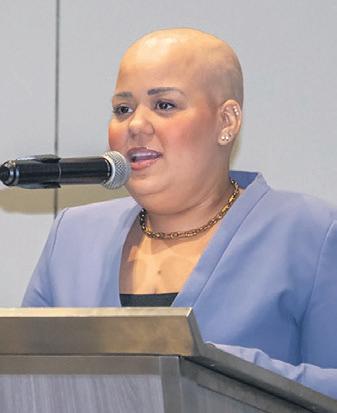
* Billboards: Strategically placed messages reminding the public that abuse is punishable and that the OPM is available to support those affected.
* Active Social Media Presence: Digital strategies to educate people about victims’ rights, encourage citizen participation, and highlight available support options.
Piñeiro Vázquez emphasized that “this campaign is not just about raising awareness; it aims to bring about real and lasting change in the mindset of those who believe that abuse can be normalized or justified.”
“Our goal is to empower victims, support organizations that address violence, and activate the entire institutional framework so that abusers face consequences,” she added.
“It is time for us to break the cycle of violence that has plagued our society for too long,” Women’s Advocate Astrid Piñeiro Vázquez said. “With this campaign, we send a strong message: abuse is intolerable, unjustifiable, and will not go unpunished. The Women’s Advocate is coming for you.”
The campaign includes several strategic components, such as:
* High-Impact Content: Television, radio, and digital ads that expose the reality of abuse, dismantling the excuses of abusers and encouraging reporting.
The initiative is part of the public policy promoted by Gov. Jenniffer González Colón, who has reaffirmed her commitment to the safety and well-being of women and families in Puerto Rico.
“We appreciate the support of the governor, her administration, and the media that join this call,” Piñeiro Vázquez said. “Together, we can achieve a country free of violence.”
“Remember, you are not alone,” she added to reiterate the message. “If you experience abuse or know someone in danger, call the OPM. We are here to protect, support, and enforce the law. Abuse Is Punished.”




By THE STAR STAFF
aribbean University (CU) celebrated its 53rd Graduation Ceremony on Tuesday with 439 new professionals during a ceremony at the Puerto Rico Convention Center.
“Faith, constant effort, and strong values are the true assets of success,” CU President Ana Cucurella said in a written statement. “Today we don’t just celebrate academic degrees. We celebrate stories of hope, second chances, discipline, and dreams come true.”
Among the graduates were 68 incarcerated students who completed technical and associate degrees through the Second Chance Pell program, in collaboration with the Department of Correction and Rehabilitation. Since 2023, the program has graduated 121 incarcerated students.
The first class of the associate degree program in greenhouse systems management also graduated, as did former Bureau of Emergency Management and Disaster Administration Commissioner Nino Correa Filomeno, who earned a master’s in business administration with a 3.92 GPA. Additionally, the first international graduate of the online doctorate in curriculum and teaching, a native of Colombia, was recognized.
Since 1969, CU has offered academic programs from its campus in Bayamón and centers in Ponce, Vega Baja and Carolina, as well as online programs, training professionals with a social and ethical commitment.
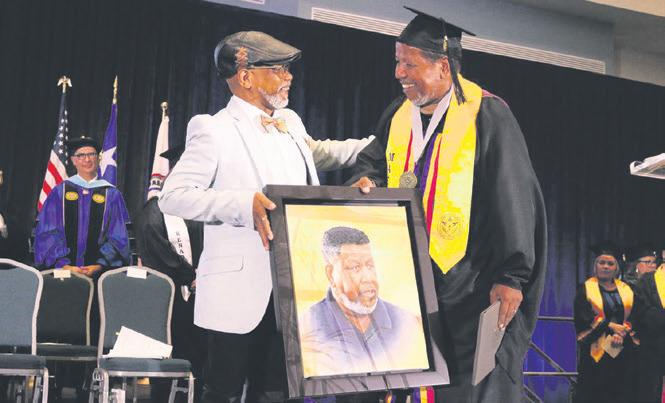
The first class of the associate degree program in greenhouse systems management at Caribbean University graduated Tuesday, as did former Bureau of Emergency Management and Disaster Administration Commissioner Nino Correa Filomeno, who earned a master’s in business administration with a 3.92 GPA.
By JOHN McPHAUL jpmcphaul1@gmail.com
Canóvanas Mayor Lornna Soto Villanueva and Cidra Mayor Delvis Pagán Clavijo expressed outrage this week at the decision of the Financial Oversight and Management Board to exclude their towns from the distribution of the millions of dollars allocated through the Special Fund as part of the so-called “financial rescue” of the island’s municipalities.
“Today I feel frustrated, worried, and, above all, outraged,” Soto Villanueva said on Monday. “This decision is not only unfair, it also represents a direct threat to the essential services we provide daily to our people, especially the most vulnerable.
Canóvanas had $35 million coming to it.”
Soto said that in anticipation of fiscal challenges, she had already implemented a series of significant cuts to the municipal budget.
The third-term Canóvanas mayor also lamented that despite compliance with established requirements, municipalities facing difficult fiscal realities are being punished.
“Unfortunately, the Municipality of Canóvanas does not generate enough of its own revenue to cover its basic expenses,” Soto Villanueva said.
Since the creation of the Financial Oversight and Management Board under the Puerto Rico Oversight, Management and Economic Stability Act, commonly known as PROMESA, the Equalization Fund “has progressively reduced the amount allocated to municipalities,” she noted, pointing out that “[m]any decisions, like this one, have been made with a purely financial perspective, without considering the socioeconomic impact on our municipal ecosystem.”
“What for many is their only line of support -- medical care in communities and homes for bedridden individuals, and cultural education like that offered at the School of Fine Arts and in our sports programs, where we have motivated, integrated, and rehabilitated hundreds of young people who were previously homeless in potentially at-risk areas -- cannot be taken lightly,” she added in a written statement. “Furthermore, the safety of our roads and public spaces is also at stake, as road weeding and landscaping will be affected.”

“The social results of our efforts, which are often not tangible in accounting terms, are not being measured,” she said. “This is the case of having rescued, channeled, and integrated hundreds of young people through our sports and fine arts programs, thus reducing crime and school dropout rates.”
Pagán Clavijo, the Cidra mayor, added his sense of dismay at having $24 million cut from his town’s federal allocation.
“Cidra should not be left out of this allocation for a momentary reason and subjective need,” he said Tuesday in a press release. “The posture of the board, which argues that certain
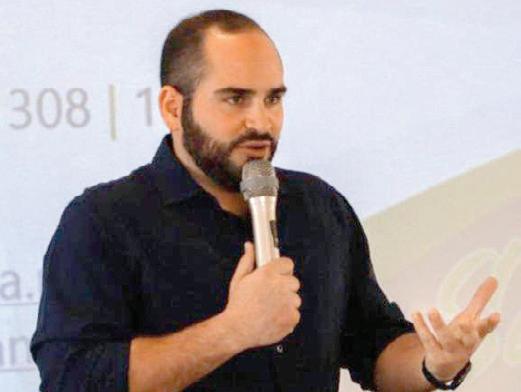
municipalities ‘perhaps don’t have urgency in an immediate way,’ cannot be an excuse to marginalize towns like ours.”
Last week, the oversight board notified the central government that the number of towns included in the Special Fund distribution would be reduced from 45 to 37. The municipalities eliminated are Añasco, Barceloneta, Canóvanas, Cidra, Las Piedras, Río Grande, Santa Isabel and Trujillo Alto.
Attempts to reach the oversight board for an explanation of the criteria used to eliminate funding for the eight municipalities had not elicited a response as of press time.
By THE STAR STAFF
The Office of Government Ethics (OEG by its initials in Spanish) announced Tuesday the launch of a pilot program in conjunction with the mayors of Cidra, Delvis J. Pagán Clavijo, and Ciales, Jesús Resto Rivera, to strengthen administrative controls and foster a culture of integrity in the island’s municipalities.
“We are sowing a culture of ethics that will impact not only these two pioneering
municipalities, but the entire island,” OEG Executive Director Luis Pérez Vargas said in a written statement.
The initiative stems from the Corruption Survey (R3-10) study, conducted in 2023, which revealed that 45% of the resolutions issued during the past decade corresponded to municipal employees. Based on that data, the OEG developed the 11 postulates for governmental transformation, which form the basis of the pilot program.
The plan will begin with two priority ar-
eas: the implementation of tracking systems and periodic inventories to protect public property, and the creation of internal oversight processes by department. Both mayors are first-term mayors, which represents an opportunity to establish stronger controls from the beginning of their administrations.
“This pilot program provides us with the necessary tools to strengthen our internal controls, protect public resources, and foster a culture of ethics that reflects the trust our citizens have placed in us,” Pagán
Clavijo said.
Resto Rivera noted that “being part of this pilot program allows us to continue the transformation our administration is implementing in Ciales, which includes the sound management of public funds and property.”
The OEG hopes to replicate the strategy in other municipalities across the island through practical guidelines, with the goal of strengthening local governance in the face of fiscal and administrative challenges.
By THE STAR STAFF
The island House of Representatives unanimously approved (51-0) on Tuesday a measure filed by Rep. José Aponte Hernández that establishes an orientation campaign on the safe use of the internet and electronic media, and on possible cybercrimes, for students in public schools in Puerto Rico.
“The importance of technology in modern society is undeniable. In fact, the health crisis caused by the COVID-19 pandemic … has forced governments and families to incor-
porate the use of technology into education more rapidly and extensively than previously imagined,” Aponte notes in the bill’s Statement of Reasons. “However, with the rise of technological advances, illicit acts known as electronic crimes or cybercrimes have also emerged and proliferated.”
“Given the international reach of the Internet, cybercrime has become an organized and professional activity,” added the chairman of the House Committee on Federal and Veterans Affairs. “Cybercriminals exploit the vulnerability of networks and computers to gain access to valuable information such as personally identifiable information, financial data, and intellectual property. Criminals now use the Internet to commit extortion, fraud, money laundering, and theft, among other acts. Our children and young people are the most vulnerable group in these cases. Due to their innocence and immaturity, they are perfect victims for these criminals.”
House Bill 424 amends several standing laws in order to establish among the functions of the island Education Department the development and implementation -- in collaboration with the Department of Justice, the Puerto Rico Police Bureau, and the Office of Innovation and Technology Services -- annual cybersafety educational campaigns in public schools.
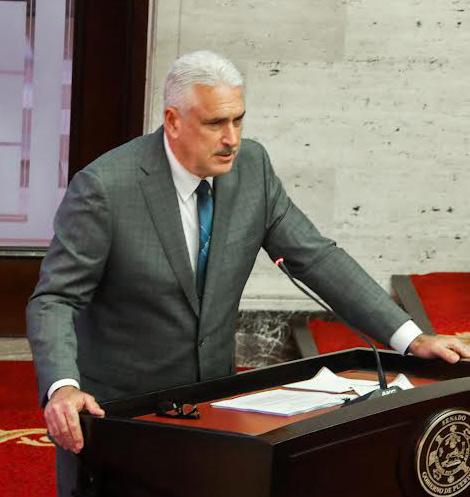
By THE STAR STAFF
Senate President Thomas Rivera Schatz announced Tuesday the filing of Senate Resolution 236, which expresses the Puerto Rico Senate’s rejection of the Financial Oversight and Management Board remaining in Puerto Rico.
Rivera Schatz argues that the oversight board has clearly exceeded the terms established in the Puerto Rico Oversight, Management and Economic Stability Act (PROMESA) and calls for immediate action by Congress and the president of the United States for its prompt dissolution.
“The Oversight Board was created as a transitional entity to stabilize Puerto Rico’s finances, not to become a permanent gov-
ernment or impose conditions beyond what is clearly outlined in the PROMESA Act,” Rivera Schatz stated. “Its continued presence has become an obstacle rather than a solution.”
The resolution outlines how the oversight board has arbitrarily imposed a list of 50 requirements not stipulated by PROMESA as conditions for its dissolution. The Senate president also emphasized what he said has been the board’s failure to address critical issues, such as the Puerto Rico Electric Power Authority’s (PREPA) debt, which continues to negatively impact the island.
“The Board has failed miserably in restructuring PREPA’s debt,” Rivera Schatz added. “Despite having the necessary resources and time, this problem remains unresolved, hindering our development and directly affecting
our economic recovery.”
“We have significantly reduced our debt, successfully restructured a large portion of our financial obligations, and restored confidence in the markets,” Rivera Schatz emphasized.
“These achievements are a result of the fiscal discipline exercised by our Legislature and state government -- not the Board. The continuation of this entity poses an additional financial burden and is an affront to the democracy and political autonomy of the Puerto Rican people.”
The resolution will be formally forwarded to the White House, the United States Congress and Senate, the Government Accountability Office and the federal Department of Justice, requesting “an immediate and concrete response to this just and legitimate claim” from the island Senate.
By THE STAR STAFF
The Puerto Rico Supreme Court has implemented a new regulation permitting non-lawyers to hold an interest in law firms, as reported by Bloomberg.
The move is expected to transform the region into a litigation finance hub due to its tax-free environment and less stringent regulations, said Paul Napoli, a partner at Napoli Shkolnik and chairman of the Trial Lawyers of Puerto Rico.
While most U.S. states prohibit non-lawyer ownership in law firms, Arizona, Utah, and Washington, D.C. have loosened restrictions, allowing alternative business structures. Arizona has seen a rise in litigation funders and external capital sources owning law firms, enabling equity participation and reducing law firms’ loan interest rates. KPMG, one of the Big Four accounting, tax, and consulting firms, gained approval to practice law in Arizona earlier this year.
Puerto Rico’s new rule is less arduous than Arizona’s, which demands an application and approval from the Committee on Alternative Business Structures. In contrast, the Puerto Rico Supreme Court requires an initial agreement notification and
an annual sworn statement disclosing lawyers in the firm, investment dates and amounts, and non-lawyer owner income, according to Bloomberg.

The new rule implemented by the Puerto Rico Supreme Court permitting non-lawyers to hold an interest in law firms is less arduous than Arizona’s, which demands an application and approval from the Committee on Alternative Business Structures. (Erika P. Rodríguez/ The New York Times)
The law mandates a Puerto Rico-admitted attorney to operate the firm and represent the non-lawyer owner’s voting and legal rights. Non-lawyers cannot own more than 49% of
law firm shares, and all clients must be informed about their ownership interest.
Puerto Rico’s tax incentives have drawn U.S. lawyers to establish businesses on the island, offering a 4% corporate tax rate and 0% capital gains tax rate for those adhering to specific guidelines, such as purchasing real estate, residing there at least half the year, and donating $10,000 to a local non-profit organization.
While non-lawyer ownership grows in popularity, it has faced opposition in some regions. A California bill introduced in March seeks to prohibit California lawyers and firms from sharing legal fees with out-of-state alternative business structures, aiming to prevent large corporations, private equity companies, and hedge funds participating in Arizona’s system from entering California via alliances with in-state lawyers.
Utah created a sandbox for non-lawyer-owned firms in 2020, monitored by the Office of Legal Services Innovation, with an annual license available after a year if certain thresholds are met. Washington, D.C. allows non-lawyer ownership for individuals performing professional services that support the firm’s legal services to clients. Arizona has eliminated the rule entirely.
By THE STAR STAFF
With the theme “Transforming Practice: Innovation, Value, and Sustainability for the CPA of the Future,” the Certified Public Accountants Association (CCPA by its initials in Spanish) will hold its Annual Conference of Independent Firms and Practitioners at its headquarters this Thursday. The event will bring together public accounting professionals to discuss the challenges and opportunities that will shape the profession’s next decade.
“In times of constant change, where technology, regulations, and customer expectations evolve at a rapid pace, this meeting is designed to inspire, inform, and empower our colleagues,” CCPA
President Cynthia J. Rijo Sánchez said. “This will be a learning
and collaborative event that reaffirms our commitment to building a sustainable profession.”
The conference will gather experts and leaders in public accounting to analyze the tax reform proposals, explore practical value pricing strategies, and discuss the role of emerging technology in certified public accounting firms. It will also include a forum for dialogue to address the profession’s current challenges and design concrete strategies to effectively address them.
“It is essential for us that our members stay up to date and willing to innovate in their practices,” Rijo Sánchez said.
The event will run from 9 a.m. to 5:15 p.m. at CCPA headquarters in Hato Rey. To register or request more information, visit: www.colegiocpa.com.

June 25, 2025 5
By CHARLIE SAVAGE
President Donald Trump’s decision to bomb three nuclear sites in Iran has prompted accusations that he violated the Constitution by carrying out an act of war without congressional authorization. The dispute underscores a split between the apparent intent of the Constitution and how the country has been governed in practice.
Although most legal scholars agree that the founders wanted Congress to decide whether to go to war unless the country is under attack, presidents in the modern era have carried out military strikes without authorization from lawmakers. Courts have shied away from weighing in, and Congress has acquiesced rather than impeaching those presidents.
“Was the Iran strike constitutional?” Jack Goldsmith, a Harvard University law professor and former senior Justice Department official in the George W. Bush administration, said Monday. “I don’t know because the constitutional law of war powers is inscrutable.”
Here is a closer look.
What has happened?
Trump ordered the U.S. military to bomb Iranian nuclear sites, without seeking congressional authorization or claiming there was evidence of an imminent threat.
Threatening further escalation, Trump has warned Iran that he will respond with more bombings if it strikes back, while musing about pushing for a change in government. But after Iran launched missiles Monday at a U.S. base in Qatar, Trump said Iran had given advance warning and there were no injuries. He suggested he wanted to de-escalate.
Critics are accusing Trump of violating the Constitution. For example, Sen. Tim Kaine, D-Va., said on “Fox News Sunday,” “It’s unconstitutional for a president to initiate a war like this without Congress.”
Republicans have generally been supportive or silent, although Rep. Thomas Massie, a libertarian-leaning Kentucky Republican, wrote on social media that “this is not constitutional.” Trump responded fiercely, saying he will back a primary challenger to Massie, a clear warning to other Republicans who may be considering criticizing his move.
What does the Constitution say?
The Constitution says Congress has the power to “declare war,” while it makes the president the “commander in chief” of the military. Most legal scholars agree that the founders intended to separate the power to initiate a war from the power to run a war once it has begun, leaving the president able only to repel sudden attacks without first going to Congress.
In the Federalist Papers, Alexander Hamilton wrote that the U.S. president, while commander in chief of the armed forces, would have less power than the British king since a president could not declare war “by his own authority” as a monarch could.
The Constitution also makes ratified treaties the “supreme law of the land.” The United Nations Charter, a treaty that the Senate ratified after World War II, says that except in self-defense, a country may attack another country only if the U.N. Security Council has authorized it.

Rep. Thomas Massie (R-Ky.) speaks to reporters outside the U.S. Capitol in Washington, March 11, 2025. President Trump’s decision to strike Iran without congressional authorization and little consultation has divided Congress and deepened rifts inside both parties, touching off a searing debate over the role of the military and how much power the legislative branch should wield over the use of American forces. (Eric Lee/The New York Times)
What has happened in practice?
In the early and middle part of American history, presidents generally got authorization from Congress for dispatching U.S. troops into offensive action abroad. But especially since the end of World War II, when the United States maintained a large standing Army, that has not always been the case.
Although presidents since the end of the Cold War have obtained congressional authorization for major land wars — the Gulf War, Afghanistan War and Iraq War — they have also increasingly asserted a right to carry out more limited interventions, especially airstrikes, without going to Congress.
What is the view from the executive branch?
Executive branch lawyers have argued that the president, as commander in chief, may use military force unilaterally if the president decides a strike would be in the national interest and its anticipated nature, scope and duration fall short of “a ‘war’ in the constitutional sense,” as a Clinton administration lawyer wrote in considering intervention in Haiti in the ’90s.
Lawyers under the first Trump administration endorsed that view in a 2018 memo that justified Trump’s attack on Syrian government forces after it used chemical weapons. It said Trump could lawfully and unilaterally direct the airstrikes because he determined that doing so would be in the national interest and because the attack would carry little risk of escalation.
“Given the absence of ground troops, the limited mission and time frame and the efforts to avoid escalation, the anticipated nature, scope and duration of these airstrikes did not rise to the level of a ‘war’ for constitutional purposes,” wrote Steven A. Engel, then the assistant attorney general for the Office of Legal Counsel.
The second Trump administration has not issued a detailed explanation of why it thinks it was lawful for Trump to attack Iranian nuclear sites. But at a press briefing Sunday, Defense Secretary Pete Hegseth gestured toward similar reasoning, while also invoking a claim of self-defense.
“This mission was not and has not been about regime change,” he said. “The president authorized a precision operation to neutralize the threats to our national interests posed by the Iranian nuclear program and the collective self-defense of our troops and our ally Israel.”
What’s the critique of the executive branch view?
It has proved impossible to get any definitive court resolution of whether the theory from lawyers in the executive branch is correct. Judges typically dismiss lawsuits against unilateral presidential military operations by saying that the plaintiffs have no right to sue and that such matters raise a “political question” that the two elected branches must work out among themselves.
But at the broadest level, critics of this view think that presidents of both parties have violated the Constitution, and that just because Congress in the past effectively acquiesced — by not impeaching them — that should not be seen as precedents that justify more breaches.
During recent presidential primary campaigns, The New York Times has asked would-be presidents to answer detailed questions about their views of executive power, including the scope of their war powers if elected. Trump did not respond to that survey in the 2016, 2020 or 2024 cycles.
But as a Democratic presidential candidate in 2020, Tulsi Gabbard, now the director of intelligence, said she disagreed with the Office of Legal Counsel’s reasoning, writing: “The president must seek congressional authorization for actions beyond an immediate response to an injury of threat of it.”
And as a challenger to President Joe Biden in the 2024 election, Robert F. Kennedy Jr., now Trump’s health and human services secretary, wrote, “Except in cases of imminent danger to the nation, a president must be constrained in war-making through the check and balance of congressional authority.”
One such check, Kennedy added, is impeachment. Is attacking Iran ‘war’ in the constitutional sense?
Some people who agree that the Constitution sometimes lets presidents carry out limited strikes without going to Congress have argued that bombing Iran’s nuclear sites is different. Attacking Iran, they say, would be much more dangerous, carrying too much risk of escalation into a major armed conflict for one person to decide.
In the Times’ executive power survey during the 2020 cycle, Biden defended the executive branch’s general view that presidents can, on their own, authorize strikes that are short of “war” in the constitutional sense. But he suggested that prior congressional permission would be constitutionally necessary to bomb Iran.
What about the War Powers Resolution?
In 1973, at the end of the Vietnam War, Congress tried to reclaim some of its eroding authority by enacting the War Powers Resolution, overriding a veto by President Richard Nixon. It says a president may only introduce forces into hostilities with congressional authorization or if the United States has been attacked.
But it also requires presidents to terminate deployments after 60 days if they lack authorization, which could suggest that one-off strikes and brief operations are allowed. Presidents of both parties have acted beyond the statute’s purported constraint about when they may launch an attack, seeing it as unconstitutionally narrow.
By HAMED ALEAZIZ
Florida is building a detention facility for migrants nicknamed “Alligator Alcatraz,” turning an airfield in the Everglades into the newest — and scariest-sounding — holding center designed to help the Trump administration carry out its immigration crackdown.
The remote facility, comprised of large tents, and other planned facilities will cost the state around $450 million a year to run, but Florida can request some reimbursement from the Federal Emergency Management Agency, said Tricia McLaughlin, a spokesperson for the Department of Homeland Security.
Florida’s attorney general, James Uthmeier, a Trump ally who has pushed to build the detention center in the Everglades, has said the state will not need to invest much in security because the area is surrounded by dangerous wildlife, including alligators and pythons. A spokesperson for the attorney general said work on the new facility started Monday morning.
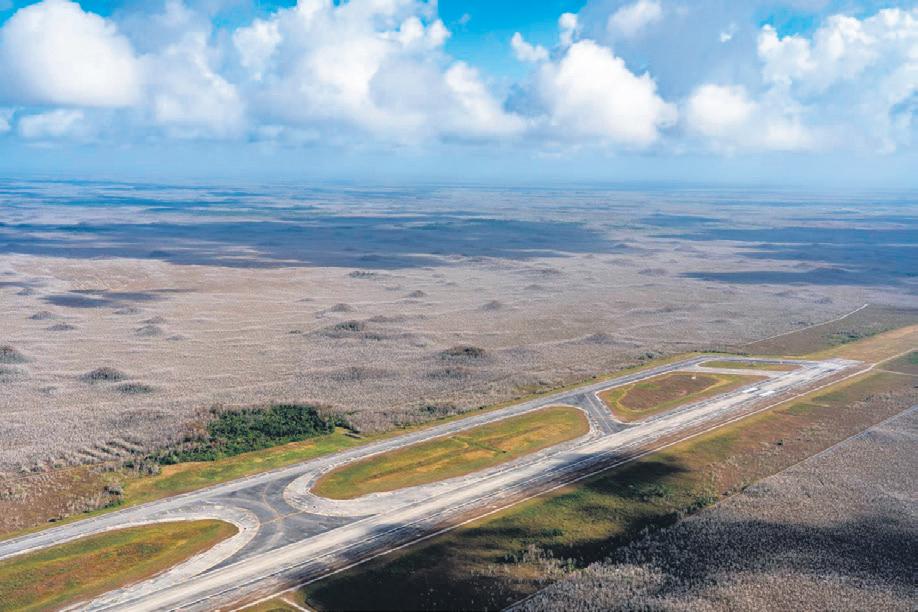
The project is sure to appeal to President Donald Trump, who talked repeatedly during his first term about building a moat along the southern border filled with alligators or snakes. As he pushed for a wall to keep migrants out, he urged officials to build it with spikes, razor wire and black paint to ensure that it would serve as a deterrent, the more terrifying-looking the better.
And since resuming office this year, Trump has already sent migrants to Guantánamo Bay, the symbol for America’s worst enemies, and to a megaprison in El Salvador.
The Everglades facility is part of a broader effort by the Trump administration to enlist local authorities to boost

detention capacity and expand the number of officers around the country who can arrest immigrants living in the country illegally. The Trump administration has struggled to meet its mass deportations goals in part because of resource constraints, and it is looking for every way possible to help increase numbers.
The goal in Florida is to have 5,000 additional beds, spread out at the new facility and potentially other, smaller facilities as well.
It’s not clear how quickly the new detention center can be built.
Mayor Daniella Levine Cava of Miami-Dade County said Monday that she wanted more time to evaluate the state’s plans for the land.
“I understand there is an intention to begin work on the site as early as Monday,” she wrote in a letter to the Florida Division of Emergency Management, which will have primary oversight of the facility.
“There has not been sufficient time to fully discuss these matters, and we thank you for your attention to these concerns given the rapid pace of the state’s effort,” Cava said.

Tasa mínima, promedio ponderado, y máxima para préstamos personales pequeños otorgados para la semana que terminó el sábado, 21 de junio de 2025
But McLaughlin, the DHS spokesperson, said the goal is to have at least some of the tents up and running by July.
The Trump administration is currently holding about 55,000 immigrants, a spike from the end of the Biden administration, when Immigration and Customs Enforcement was holding about 40,000 people.
Trump officials have been pushing Congress to help pay for more funding to expand detention capacity even further. Tom Homan, Trump’s border czar, has said that the number of detention beds available will dictate the number of deportations that the administration will be able to hit this year.
“Under President Trump’s leadership, we are working at turbo speed to deliver cost-effective and innovative ways to deliver on the American people’s mandate for mass deportations of criminal illegal aliens,” Kristi Noem, the homeland security secretary, said in a statement.
Immigrant advocates criticized the move, saying that it was creating a new form of detention outside the scope of the federal government. Mark Fleming, the associate director of federal litigation at the National Immigrant Justice Center, said it amounted to an “independent, unaccountable detention system.”
Fleming added that there were a host of problems with the plan to hold migrants in tents at the airfield.
“The fact that the administration and its allies would even consider such a huge temporary facility,” he said, “on such a short time line, with no obvious plan for how to adequately staff medical and other necessary services, in the middle of the Florida summer heat is demonstrative of their callous disregard for the health and safety of the human beings they intend to imprison there.”
“It simply shocks the conscience,” Fleming said.
Immigrants are typically held by ICE officials in private prisons and local jails that offer space in their facilities for a certain amount of money.
Florida officials are going a step further: building a detention center specifically for immigrants picked up by local authorities on behalf of the federal government. ICE could also use the facility to hold migrants picked up elsewhere in the country.
“I’m proud to help support President Trump and Secretary Noem in their mission to fix our illegal immigration problem once and for all,” Uthmeier said in a statement. “Alligator Alcatraz and other Florida facilities will do just that.”
The FEMA money will be drawn from a fund that was created during the Biden administration to pay organizations and local jurisdictions that help house and care for migrants going through the immigration court system in the United States.
The Trump administration criticized Biden’s use of the money, particularly the funds that went toward helping New York City to care for migrants. Earlier this year, DHS took back $80 million from the grants. The city is suing to retrieve the money.
By FARAH STOCKMAN
President Donald Trump’s pledge to revive American manufacturing is running into the stubborn obstacle of demographic reality.
The pool of blue-collar workers who are able and willing to perform tasks on a factory floor in the United States is shrinking. As baby boomers retire, few young people are lining up to take their place. About 400,000 manufacturing jobs are currently unfilled, according to the Bureau of Labor Statistics — a shortfall that will surely grow if companies are forced to rely less on manufacturing overseas and build more factories in the United States, experts say.
Difficulty attracting and retaining a quality workforce has been consistently cited as a “top primary challenge” by U.S. manufacturers since 2017, said Victoria Bloom, the chief economist at the National Association of Manufacturers, which produces a quarterly survey. Only recently has the issue slipped down on the list of challenges, superseded by trade-related uncertainty and increased raw material costs due to tariffs, Bloom said.
But the scarcity of skilled blue-collar workers remains a long-term problem, according to Ron Hetrick, an economist with Lightcast, a company that provides labor data to universities and industry.
“We spent three generations telling everybody that if they didn’t go to college, they are a loser,” he said. “Now we are paying for it. We still need people to use their hands.”
The hiring challenges faced by U.S. factories are multifaceted.
The president’s crackdown on immigration, which includes attempts to revoke deportation protections for migrants from troubled countries, may eliminate workers who could have filled those jobs.
Many Americans aren’t interested in factory jobs because they often do not pay enough to lure workers away from service jobs that may have more flexible schedules or more comfortable working environments.
For some companies, remaining globally competitive involves the use of sophisticated equipment that requires employees to have extensive training and familiarity with software. And employers cannot simply hire people right out of high school without providing specialized training programs to bring them up to speed. That wasn’t the case in the heyday of American manufacturing.
Attracting motivated young people to manufacturing careers is also a challenge when high school guidance counselors are still judged by how many students go on to college.
College graduates, on the other hand, often do not have the right skills to be successful on a factory floor.
The country is flooded with college graduates who can’t find jobs that match their education, Hetrick said, and there are not enough skilled blue-collar workers to fill the positions that exist, let alone the jobs that will be created if more factories are built in the United States.
The Business Roundtable, a lobbying group whose members are CEOs of companies, has started an initiative in which executives collaborate on strategies to attract and train a new generation of workers in skilled trades. At an event last week in Washington, executives commiserated about how hard it was to find qualified people and swapped tips onstage for overcoming the gap.
Their ideas included combing through existing company job descriptions to prioritize relevant experience over college degrees and recruiting high school students as young as sophomores for experiences that could draw their interest in manufacturing careers.
“For every 20 job postings that we have, there is one qualified applicant right now,” said David Gitlin, chair and CEO of Carrier Global, which produces air conditioners and furnaces and services heating and cooling equipment.
With the rise of artificial intelligence, Gitlin said, demand has exploded for technicians to service data centers, which are built with cooling systems called chillers. He estimated that each data center would require four technicians to maintain a single chiller.
“We have 425,000 technicians today,” he said, referring to the heating and air conditioning industry as a whole. “We are going to need to hire another four to

five hundred thousand over the next 10 years.” But the number of young people going to vocational schools and community colleges, he added, is dropping, not growing.
At the Business Roundtable event, executives praised Trump’s efforts to revive the country’s industrial base. But some executives acknowledged that the president’s immigration policies posed challenges to any effort to fill the factories that he has pledged to bring back.
Peter J. Davoren, the chair and CEO of Turner Construction Co., said that he would like to see “a clear path for citizenship” for immigrants in the construction and food industries.
The Trump administration’s aggressive cuts to training programs for blue-collar workers have also hurt efforts to train a new generation of factory workers. The administration has taken steps to eliminate the Job Corps, a 60-year-old program that provides atrisk youths from 16 to 24 with a path to a career in the trades. Huntington Ingalls Industries, the country’s largest shipbuilder, hired 68 Job Corps graduates in December in its bid to beef up its workforce.
“The gap between available skills and needed skills in the workforce is widening,” said Chris Kastner, president and CEO of HII. “Technology is evolving fast but education and training systems too often lag behind.”
The Trump administration has rolled out an initiative called Make America Skilled Again, which consolidates existing workforce training programs into one initiative that would give states grants if the states meet certain criteria. At least 10% of the new Make America Skilled Again funding must be spent on apprenticeships.
In April, Trump signed an executive order that directed the secretary of labor, the secretary of commerce and the secretary of education to submit a plan to create 1 million registered apprenticeships. But it is unclear whether that ambitious target can be achieved with the funding in Trump’s budget bill, which trims $1.6 billion from workforce training.
U.S. stocks rallied more than 1% on Tuesday as investors welcomed a fragile truce with Israel and Iran while parsing Federal Reserve Chair Jerome Powell’s congressional testimony for clues regarding the U.S. central bank’s path forward.
All three major U.S. stock indexes closed with their second straight session of solid gains following U.S. missile strikes on Iran’s uranium enrichment assets.
The benchmark S&P 500 grew within striking distance of its all-time closing high reached on February 19.
Late Monday, U.S. President Donald Trump announced a cease-fire agreement, which Israel appeared to have violated.
Still, investors viewed the cease-fire rhetoric as a sign of de-escalating tensions.
“The bulls are out of their bucking shoots,” said Greg Bassuk, Chief Executive Officer at AXS Investments in New York. “The cease-fire really adding fire to the stock market rally. We believe investors are wagering that calm in the Middle East is really a boon for stocks even as it weighs down bonds and oil prices.”
Crude prices slid on waning supply concerns related to the conflict, dragging energy shares lower.
Powell, speaking before the U.S. House of Representatives Financial Services Committee, reiterated his view that rate cuts can wait until the economic effects of tariff increases are better known, adding “we are well positioned to wait to learn more about the likely


course of the economy before considering any adjustments to our policy stance.”

Financial markets have been pricing in a more than 20% likelihood that the Fed will lower its key interest rate at the conclusion of its July policy meeting, and a near 70% probability that its first rate cut will land in September.
On the economic front, consumer confidence deteriorated this month, with pessimism toward the jobs market falling to its lowest level since March 2021.



Abodada-Notario • HERENCIAS | QUIEBRA | DERECHO Hogar Seguro Testamento

jrclegalsolutions tuabogadapr@outlook.com Urb. Villa Blanca 76 Calle Aquamarina


“Consumer confidence was down,” Bassuk added. “And as we see these economic data points casting a shadow over the strength of the U.S. economy, it’s another factor pointing toward greater likelihood of Fed rate cuts this year.”
The Commerce Department is expected to release its final take on first-quarter GDP on Thursday, and on Friday its closely watched Personal Consumption Expenditures (PCE) report will shed light on inflation, consumer spending and income growth.
By PATRICK KINGSLEY, ISABEL KERSHNER, AARON BOXERMAN and MICHAEL D. SHEAR
Afragile ceasefire between Israel and Iran appeared to be holding Tuesday, as Israel’s military lifted emergency restrictions imposed during the conflict and Iran’s president hailed “the end of a 12-day war that was imposed on the Iranian people.”
The nascent truce came hours after President Donald Trump lashed out at Iran and Israel for launching attacks after he had announced an end to their brief war. Trump later took credit for bringing an end to the fighting in a post on social media, as a preliminary U.S. report cast doubt on one of his big claims: that U.S. airstrikes had destroyed key Iranian nuclear facilities and crippled the country’s efforts to develop an atomic weapon.
“Both Israel and Iran wanted to stop the War, equally!” Trump wrote Tuesday morning as he flew to a NATO summit in the Netherlands. Referring to the U.S. military strikes over the weekend, he added, “It was my great honor to Destroy All Nuclear facilities & capability, and then, STOP THE WAR!”
The classified report, compiled by the Defense Intelligence Agency, suggested otherwise. It said the American bombing of Iran’s nuclear sites sealed off the entrances to two of the facilities but did not collapse

People carry Iranian flags as they chant at a gathering in support of Iran’s military in Tehran, Iran, Tuesday, June 24, 2025. A fragile cease-fire between Israel and Iran appeared to be holding on Tuesday, ending 12 days of deadly airstrikes and reprisals, hours after President Trump lashed out at both countries for launching attacks after he had announced an end to their brief war. (Arash Khamooshi/The New York Times)
their underground buildings, according to officials familiar with the findings. The early findings concluded that the strikes set back Iran’s nuclear program by only a few months, the officials said.
Earlier, in remarks to reporters punctuated by an expletive, Trump criticized Israel for retaliating for an Iranian missile attack “right after we made the deal.”
On Air Force One, Trump said he had spoken with Prime Minister Benjamin Netanyahu of Israel on Tuesday morning and was “firm and direct” about what needed to happen to sustain the ceasefire.
Netanyahu’s office said that Iran had fired missiles after the ceasefire took effect and that the Israeli military had retaliated by striking a radar system near Tehran. Iran’s military denied violating the ceasefire, and Netanyahu’s statement indicated that Israel’s retaliation was limited.
Even as Iran and Israel offered competing versions of the timing of strikes after Trump’s ceasefire was announced, their explanations and comments throughout the day suggested that the sides — both of which claim to have prevailed in the conflict — want the ceasefire to hold.
Here’s what else to know:
— Global reaction: World leaders greeted the ceasefire announcement with cautious optimism. “If a ceasefire has indeed been achieved, then that can only be welcomed,” said Dmitry Peskov, the Kremlin spokesperson. President Emmanuel Macron of France praised the announcement but warned that “the situation remains volatile and unstable.”
— Trading fire: Iran and Israel both mounted attacks overnight and then presented competing narratives about who was at fault for the back-and-forth. At least four people were killed when a missile fired from
Iran hit an apartment building in the southern Israeli city of Beersheba. In Tehran, residents said they endured a night of the heaviest airstrikes since the war began June 13.
— War powers: Several top Senate Democrats are pushing for a vote to require congressional approval for any further military action against Iran and are even proposing to narrow the measure to draw maximum support from a divided party. With Republicans holding majorities in both chambers of Congress, no measure restricting Trump’s military authority is likely to succeed, but the Democrats’ efforts have reinvigorated a longdormant debate over Congress’ role in matters of war.
— Diplomacy: As Qatar and the other Gulf nations watched the war unfold over the past two weeks, they worried that an escalation could result in a widening conflict in which Iran might target their strategic energy resources. So even before Iran fired missiles at a U.S. military installation on its territory Monday, Qatar engaged quietly with the United States and with the Iranian government to lay the groundwork for a truce.
— Markets rise: A second day of declining oil prices helped lift stocks Tuesday as the ceasefire between Israel and Iran began to take hold. The S&P 500 had risen more than 1% heading into afternoon trading and now sits less than 1% away from its February record high.
By TYLER PAGER
As he left Washington on Tuesday morning to travel to The Hague for the annual summit of the NATO military alliance, President Donald Trump was busy trying to hold together a fragile ceasefire between Israel and Iran. “Now we’re going to NATO, and we’ll get a new set of problems,” Trump told reporters aboard Air Force One. “We’ll solve a new set of problems.”
The tentative ceasefire between Israel and Iran will likely dominate the agenda at the meeting, even as Russia continues to pummel Ukraine at the edge of the alliance’s territory. Trump is also expected to claim victory and assert that all NATO allies have agreed to spend 5% of their gross domestic product on their militaries, up from the current commitment of 2%. He has accused the allies of being overly dependent on the protection of U.S. forces.
“NATO was broke, and I said, ‘You’re going to have to pay,’ and we did a whole thing, and now they’re paying a lot,” he said.
But despite Trump’s eagerness to take credit, not all coun-
tries have committed to the pledge. Spain, for example, has said it would not increase its spending above 2.1% of its GDP.
“They’re having a problem with Spain,” Trump said Tuesday. “Always a problem with Spain. Spain’s not agreeing, which is very unfair to the rest of them.”
Yet Trump has maintained that the United States — which spends about 3.5% of its GDP on its military — does not need to meet the 5% goal he has demanded of other countries. He argues that, for one thing, the United States does not have the same need to invest in its infrastructure to support military equipment.
“A lot of that money goes to rebuilding their bridges, their roads, so it can take heavy equipment,” he said. “And you know, we don’t have any roads in Europe. We don’t have any bridges in Europe.”
Mark Rutte, secretary-general of NATO, has been eager to make Trump’s time at the summit go smoothly and avoid any diplomatic blowups — an effort that was clearly on display in a message from Rutte that Trump posted on his social media site.
In the message, which representatives for Rutte confirmed as authentic, the NATO leader praised Trump’s “decisive ac-
tion in Iran” and said he was “flying into another big success in The Hague this evening,” citing a consensus on the 5% spending figure.
“Europe is going to pay in a BIG way, as they should, and it will be your win,” the message said.
On the plane, Trump played coy when asked whether he was committed to Article 5, the part of NATO’s treaty that stipulates an attack on one ally would be defended as an attack on all. The president said it “depends on your definition” of Article 5.
“I’m committed to saving lives,” he said. “I’m committed to life and safety, and I’m going to give you an exact definition when I get there. I just don’t want to do it on the back of an airplane.”


By SIMON ROMERO and EMILIANO RODRÍGUEZ MEGA
In the far-flung hamlet in southern Mexico where he grew up, Hugo Aguilar Ortiz’s boyhood job was to herd goats. Nearly everyone around him on the mistshrouded slopes of Oaxaca persisted in speaking Tu’un Savi, known as the language of the rain, even centuries after the Spanish conquest.
“I thought the world ended at the mountains,” said Aguilar Ortiz, now 52 and the newly elected chief justice of Mexico’s Supreme Court. “I never thought about becoming a lawyer.”
Dealing a jolt to Mexico’s legal establishment, he won his seat in the country’s first judicial elections, part of a sweeping redesign of the judiciary by the leftist governing party, Morena. It rewrote the constitution to let voters directly elect thousands of judges around Mexico, ending the previous appointment-based system.
Feuding over the judicial overhaul has consumed Mexico for the past year. Critics say it erodes the last major check on the power of President Claudia Sheinbaum’s party, which already controls the executive branch, both houses of Congress and most statehouses across Mexico.
But Morena’s supporters contend that the changes were needed not only to root out the judicial system’s corruption and nepotism, but also to make judgeships attainable to those traditionally excluded from positions of power. Aguilar Ortiz’s metamorphosis from goatherd to chief justice bolsters such ambitions.
“Things can change now that we have Hugo there,” said Alejandro Marreros Lobato, a Nahua human rights activist, who drew on Aguilar Ortiz’s support in a legal battle against a Canadian open-pit mining project near his Nahua community. “It makes me feel that we can finally start talking about justice.”
In an interview, Aguilar Ortiz said he aimed to prioritize the rule of law and the needs of Indigenous peoples as chief justice, citing his own path to the Supreme Court. Both of his grandmothers in the village of San Agustín Tlacotepec spoke only Tu’un Savi (also called Mixtec). His father was a teacher; his mother tended the fields.
After leaving his village to attend law school, he said, he was a legal adviser to the Zapatista Army of National

Liberation, the armed rebel movement that became a global phenomenon in 1994 after staging an uprising in southern Mexico demanding greater rights for Indigenous peoples. He said he helped transform the group’s concerns into concrete legal demands, though others involved with the Zapatistas at the time said his involvement was not substantial.
After his time with the guerrillas, Aguilar Ortiz practiced law with a focus on human rights. Then he joined the Oaxaca state government in 2011 as undersecretary of Indigenous affairs, but resigned a few years later after hundreds of police officers brutally repressed a teachers demonstration in Oaxaca in which eight people were killed.

When Andrés Manuel López Obrador won the presidency in a landslide victory in 2018 with pledges to improve the lives of the poor and other neglected groups, Aguilar Ortiz seized on another opportunity. He joined a federal agency as general coordinator of Indigenous rights.
He has emerged as one of Mexico’s most visible Indigenous figures at a time when Indigenous Mexicans face myriad challenges.
While about 19% of Mexico’s population identified as Indigenous in the 2020 census, they are underrepresented in Congress, executive suites, the media and the courts. Speakers of Indigenous languages are dwindling. Poverty and threats from drug cartels are forcing many Indigenous people to migrate to Mexican cities or to the United States.
Underscoring how marginalized Indigenous peoples remain in Mexico, historians say that Aguilar Ortiz is thought to be only the second person publicly identifying as Indigenous to lead the Supreme
Court in more than 160 years. The first was Benito Juárez, a Zapotec lawyer in the 19th century who become president and a national hero.
Juárez, whose statues now stand in plazas across Mexico, and Aguilar Ortiz share some similarities. Both hail from Oaxaca, though they belong to different Indigenous peoples. Both grew up in poverty in families eking a living out of the land. Both left their hometowns to study law in the state capital.
And like his predecessor, Aguilar Ortiz has become a polarizing figure. Some celebrate the new chief justice as a symbol of national pride who has fought to protect Indigenous rights. Others view him as a political creature, cozying up to power in ways that support Mexico’s governing party while neglecting Indigenous communities.
Some of the unease involves the outcome of the judicial elections. Candidates aligned with Morena now dominate the Supreme Court, a new tribunal with the power to fire judges and court circuits across the country. Turnout in the election was dismal. Only 13% of voters bothered to cast ballots.
Aguilar Ortiz rejected such criticism, insisting he will base his rulings on the law. Despite his work for López Obrador’s government, he said that he was not a member of Morena and that his election win reflected voters’ desire to democratize the judicial system, especially among those from Indigenous communities.
“Morena didn’t place me here, nor did the president, Congress or any other politician,” he said.
By THE EDITORIAL BOARD
The surge in political violence during the Trump years has imperiled not only American lives but also our country’s collective memory. The details of a new atrocity overwrite the old. Even the names of the fallen evade our best efforts to retain them.
Before the next act of political violence seizes our attention, let us pause and preserve in memory Melissa Hortman, a member of the Minnesota Legislature, and her husband, Mark. The couple became the latest casualties of our nihilistic politics this month after a gunman killed them in their home, authorities say. Let us also keep in mind John Hoffman, a state senator, and his wife, Yvette, who were wounded in the same series of attacks. Prosecutors say that the gunman, who carried a target list of other Democratic politicians, wanted to inflict fear.
The Minnesota attacks join a grim catalog of political violence in recent years. In 2017, a gunman shot four people, badly wounding Rep. Steve Scalise, R-La., at a practice before the annual congressional baseball game. On Jan. 6, 2021, hundreds of rioters attacked Congress as it was meeting to certify the presidential election result. In 2022, an attacker broke into Nancy Pelosi’s home and fractured the skull of her husband, Paul, with a hammer. Last year, two would-be assassins separately tried to kill Donald Trump. In April, a man set fire to the home of

PO BOX 6537 Caguas PR 00726
Telephones: (787) 743-3346 • (787) 743-6537 (787) 743-5606 • Fax (787) 743-5100

Dr. Ricardo Angulo
Founder
Manuel Sierra General Manager
María de L. Márquez Business Director
R. Mariani
Circulation Director
Lisette Martínez
Pennsylvania Gov. Josh Shapiro while he and his family slept inside.
Fear has become a fact of life for politicians. Mark Rozzi, a former speaker of the Pennsylvania House, wore a bulletproof vest for several months because of harassment he had received. Some unelected public servants live with similar anxieties. Many federal judges have taken new precautions in recent months because of the threats against them.
Why are attacks on public officials any more worthy of space in our national memory than other acts of violence?
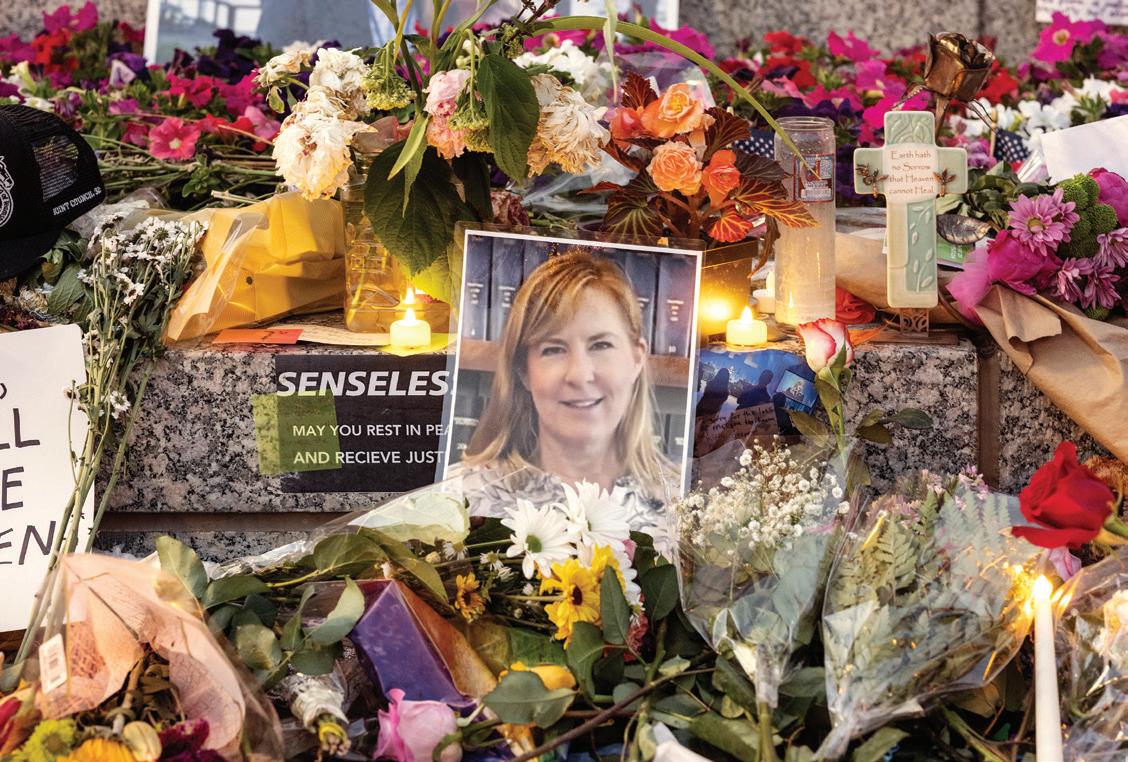
The Hortmans and Hoffmans were hunted because of their distinct role in American life. They were parts of a government by the people.
In a different era, the country might have taken time to express its collective grief about the horrors in Minnesota. One can imagine the president and a bipartisan group of congressional leaders visiting and making a unified statement that political differences do not excuse violence.
Such solidarity is important, given that the recent attacks span ideological boundaries. Democrats and Republicans alike have been victims. People on the right and the left engage in making demonizing comments that attackers have used to justify their violence.
Although Trump has personally been a victim of this violence, he also deserves particular responsibility for our angry culture. He uses threatening language in ways that no other modern president has. He praises people who commit violence in his name, such as the Jan. 6 rioters, many of whom he has pardoned, despite their attacks on police officers and others. He sometimes seems incapable of extending basic decency to Democrats. Instead of calling Gov. Tim Walz of Minnesota to express condolences about the killings of two of his friends, Trump insulted Walz. It is no coincidence that hate crimes have surged, according to the FBI, during Trump’s decade as a dominant political figure.
Some of Trump’s Republican allies also talk about violence
in ways that prominent Democrats rarely, if ever, do. This month, Sen. Mike Lee, R-Utah, posted a bizarre message to social media that blamed leftists for the Minnesota attacks. “This is what happens When Marxists don’t get their way,” he wrote. He went on to describe the attacks as “Nightmare on Waltz Street,” presumably a snide reference to Walz, who was the Democratic vice presidential nominee last year. Lee was once a principled libertarian. The old version of himself would be ashamed of his recent behavior.
The new culture of political violence is being reinforced. When we move on too quickly from an attack against our society’s organizing ideas, we normalize it. The next shooter, the next extremist, sees a society that accepts violence. Forgetting is dangerous. It encourages repetition.
The opposite is true as well, however. When we take time to remember Melissa and Mark Hortman, we honor their sacrifice for our country. We give meaning to what is otherwise senseless.

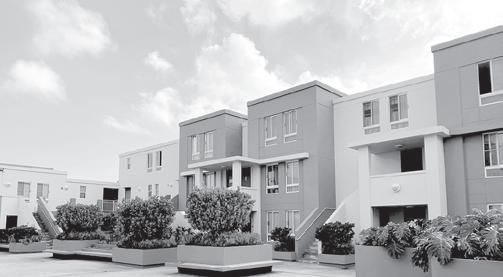


LUQUILLO – El presidente de la Cámara de Representantes, Carlos ‘Johnny’ Méndez, anunció el fallecimiento de doña Edna Josefina Figueroa, exalcaldesa del municipio de Luquillo y quien se distinguió por el desarrollo de múltiples proyectos de gran impacto social, incluyendo el Centro de Arte y Cultura, impulsar la llegada del programa ‘Mar sin Barreras’, el desarrollo del Consorcio del Noreste para Adiestramiento y Empleo y el Parque del Quinto Centenario del Descubrimiento (Monumento al Cacique Loquillo), entre otros.
“Con mucho pesar anunciamos la partida física de la exalcaldesa de Luquillo, doña Edna Josefina Figueroa, quien se destacó por las enormes aportaciones al desarrollo económico, la cultura, el cuidado de adultos mayores y niños y la erradicación de barreras para las
personas con necesidades especiales. Maestra de vocación, Edna Josefina, también fue presidenta de la Asamblea Municipal y continuó aportando desde el retiro al bienestar de las comunidades de su amado municipio”, comentó el líder legislativo.
“Nos unimos en oración por el eterno descanso de nuestra siempre Alcaldesa. Los pensamientos de los miembros de la Cámara de Representantes de Puerto Rico están hoy con sus familiares, particularmente sus hijos, nietos y biznietos, al igual que sus amistades y el Pueblo de Luquillo en este difícil momento”, amadio el también Representante por el Distrito #36 de Río Grande, Luquillo, Fajardo, Ceiba, Vieques y Culebra.
Figueroa nació el 20 de marzo de 1939, en Luquillo. Se destacó como maestra del sistema público de enseñanza por más de tres décadas. También presidió la Asamblea Municipal por siete años.
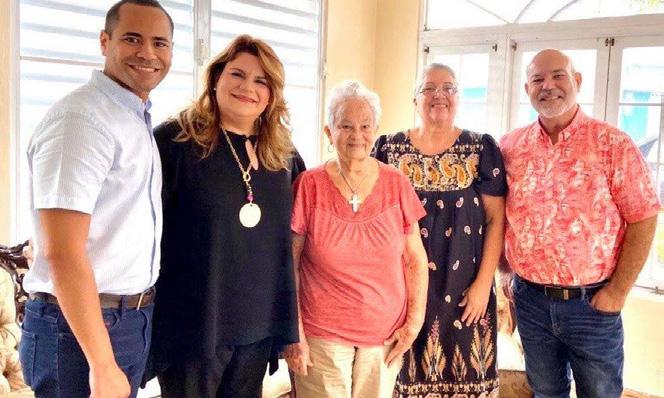
Miembro del Partido Nuevo Progresista, fue electa como alcaldesa de la llamada ‘Ciudad del Sol’ en noviembre de 1988, por el Partido Nuevo Progresista. Recibiendo el favor del Pueblo en dos ocasiones siguientes, ambas por un amplio márgen.
Bajo su administración se desarrollaron, además, un nuevo Parque de Bomba y un novel proyecto de viviendas para personas de la tercera edad.
SAN JUAN – La gobernadora Jenniffer Aidyn González Colón anunció a principios de esta semana el inicio de una nueva ruta aérea directa entre la Ciudad

de México y San Juan, que comenzará a operar el 29 de octubre con cuatro frecuencias semanales, a través de Aeroméxico en alianza con Delta Air Lines.
“Esta ruta, cuyo impacto económico directo se estima en 13.5 millones de dólares al año, viene a fortalecer aún más los lazos comerciales entre México y Puerto Rico que hoy superan los 1.5 billones anuales”, expresó González Colón el lunes durante una conferencia de prensa desde el Aeropuerto Internacional Luis Muñoz Marín.
La directora ejecutiva de la Compañía de Turismo, Willianette Robles Cancel, sostuvo que esta es la primera vez en 25 años que se establece una conexión directa entre la capital mexicana y San Juan. “Las operaciones de la línea aérea aportan a la expansión de la red de mercados primarios y secundarios en la región de Centro y Suramérica”, indicó.
El vicepresidente senior de Ventas Globales de Ae-
roméxico, Giancarlo Mulinelli, destacó el significado cultural de la nueva conexión. “Estamos muy emocionados de anunciar nuestra ruta directa de San Juan, Puerto Rico a Ciudad de México, un destino que destaca por su vibrante cultura”, manifestó.
Por su parte, el presidente de Aerostar Puerto Rico, Jorge Hernández, celebró el logro. “Después de más de dos décadas sin un vuelo directo entre San Juan y Ciudad de México, celebramos el restablecimiento de esta importante ruta que abre nuevas puertas para el turismo, los negocios y el intercambio cultural entre ambos destinos”, dijo.
Aeroméxico, la principal aerolínea de México y miembro de una alianza global con acceso a más de mil destinos internacionales, ofrecerá esta ruta de miércoles a sábado desde México hacia Puerto Rico, y de jueves a domingo en dirección contraria. Información adicional está disponible en www.aeromexico.com.
Encuentran culpable a hombre por carjacking con resultado de muerte
POR CYBERNEWS
SAN JUAN – Un jurado federal encontró culpable el viernes a Joseph Payne Pabón por un carjacking con resultado de muerte, ocurrido el 7 de enero de 2020 en el municipio de San Juan.
“El veredicto es el resultado directo de los esfuerzos incansables y el excelente trabajo de los agentes y oficiales del Buró de Alcohol, Tabaco, Armas de Fuego y Explosivos, el Negociado de la Policía de Puerto Rico y el personal de la Fiscalía federal”, dijo el fiscal federal W. Stephen Muldrow en de-
claraciones escritas.
De acuerdo con los documentos del tribunal y la evidencia presentada en el juicio, Payne Pabón, de 34 años y sin hogar, entró a la residencia de Eulalia Combas Sancho, de 82 años, durante el apagón provocado por los terremotos. Allí la golpeó con un bloque de cemento en la parte posterior de la cabeza, causándole fractura craneal y trauma cerebral que le provocaron la muerte. Luego, robó su vehículo Hyundai Sonata. “Este veredicto refleja la intolerancia de nuestra comunidad hacia los actos violentos sin sentido y nuestro compromiso de llevar ante la justicia a los
ofensores que ponen en peligro a personas inocentes”, expresó Gordon Mallory, agente especial interino a cargo de la División de Campo de ATF en Miami.
El caso fue investigado por el Buró de Alcohol, Tabaco, Armas de Fuego y Explosivos, con la asistencia del Negociado de la Policía de Puerto Rico y el Departamento de Justicia local.
Los fiscales federales Jeanette Collazo Ortiz y César Rivera Díaz estuvieron a cargo del procesamiento judicial. La vista de sentencia fue pautada para el 10 de septiembre de 2025 a las 10:30 de la mañana ante la jueza federal Aida Delgado Colón.
By JON PARELES
“The past always weighs heavy on me,” Bruce Springsteen said on an April afternoon, sitting in the anteroom attached to Thrill Hill, his home studio in New Jersey, where he can make music at any time. “Our pasts have a lot to do with shaping who we are now and the things we’re pursuing. So that is a theme that constantly recurs to me, and I’m always rewriting it, trying to get it right.”
On Friday, Springsteen will unveil a huge, almost entirely unknown trove of songs from his past on “Tracks II: The Lost Albums.” They reveal musical paths — mostly pensive, occasionally rowdy — that he briefly explored but chose to set aside. Unlike his 1998 collection “Tracks,” a set of demos, alternate versions and unreleased songs dating back to the 1970s, “Tracks II,” with 83 songs, 74 of them previously unreleased in any form, is organized as seven distinct albums.
Springsteen grew up in the era of vinyl LPs, not playlists that can be shuffled. For him an album is “a cohesive group of songs, basically, that end up being greater than the sum of their parts,” he said. “They resonate off of one another, creating altered meanings and meanings in reflection with the other songs.”
A record, he added, “is exactly what it says it is. It is a record of who you are and where you were at that moment in your life. These were actual albums that were of a piece, of a moment, of a genre — that fell together, often while working on other albums.”
As he’s been preparing this extensive look back, the 75-year-old musician, well aware of his longtime role as a symbol of America, has also been confronting the political present.
During his current tour of Britain and Europe, Springsteen has given recurring, forthright speeches onstage, and released them immediately online in a six-track EP. Introducing songs like “Land of Hope and Dreams,” about immigrant aspirations, and “My City of Ruins,” about urban neglect, Springsteen has been directly denouncing the Trump administration as “corrupt, incompetent and treasonous,” and warning about “an unfit president and a rogue government.”
Before the tour, I visited Thrill Hill. “Welcome to the House of a Thousand Guitars,” Springsteen said with a chuckle. It’s a long, sunlit shed holding a 64-track console and orderly rows of guitars, drums and keyboards, directly attached to a garage full of shiny cars and motorcycles. The walls of the studio entrance are lined with framed outtakes from the photo sessions for “Born in the U.S.A.” that show him clowning around with saxophonist Clarence Clemons, who died in 2011. A whiteboard listed song titles from an album in progress by E Street Band member Patti Scialfa, Springsteen’s wife.
I asked to see “the vault” — his recorded archives. It’s just a nondescript server in a closet, but it holds terabytes of digital files. His master tapes, from back in the analog era until now, remain in a secure Iron Mountain storage facility.
Springsteen was still choosing a tour set list. He wanted one “that addresses our current situation,” he said. “It’s an American tragedy.”
Wearing a long-sleeve khaki T-shirt and camouflage pants, Springsteen spoke about his career as the sum of impulses, intuitive choices and a determination to stay productive — far from
a master plan. “I kind of work from the inside out,” he said. “I don’t have a concept before I make a record or anything. I’m just working on what I’m feeling at a given moment. And that can go anywhere.”
He has gone through yearslong stretches of not writing songs at all, he said. Then he has written whole albums in a matter of weeks. “I’m a soul miner,” he said. “So I’m down in the mine and I’m chipping away. And very often I’m getting nothing, nothing, nothing — more often than not. Nothing, nothing, nothing. And then you hit a vein. And when you hit that vein, Bang! Things come pouring out. And you’ve struck some gold, musical gold. And then you’ll play through that vein. And then you’re back. Nothing, nothing, and you’re looking for another vein.”
It’s a job that he still doesn’t control. “Nobody can explain that moment when you breathe life into the characters in your music, in your songs,” he said. “It comes up deeply from your subconscious and your life experience. And the alchemy of that moment remains a mystery of the mind, soul and heart.”
For “Tracks II,” Springsteen and Ron Aniello, his producer and multi-instrumentalist sideman since 2010, optimized the sound quality and occasionally added instrumental parts to the old recordings. But Springsteen “didn’t re-sing anything,” Aniello said in a later telephone interview. “All those records have those vocals from that era, whenever it was.”
Six of the so-called “lost” albums were drawn from studio projects that delved into particular styles: low-fi, country, Mexican ranchera, retro pop. The seventh album, “Perfect World,” is a ringer. It’s a compilation of rock songs that Springsteen recorded from the 1990s into the 2010s, included to give longtime fans the meaty rock they expect from the Boss. One of its songs, “Rain in the River” — a stomping murder ballad — has some of the most primal vocals of his entire catalog.
The bulk of “Tracks II” grows out of Springsteen working solo, as a one-man studio band, as he has since the 1980s. He’ll record with a rhythm track, “basically a drum machine of some sort or maybe just a click, an acoustic guitar and my voice,” he said. “Then I run around and I play all the instruments. I play the keys, I play bass, I play the guitars, and the synthesizers — just to see, to give me an idea.”
“If he’s doing a demo, it’s done in an hour,” Aniello said. “It’s like, ‘I’ll try a piano, I’ll throw this in,’ and it’s all just one take. It’s all very messy. He’s not going for takes — there’s plenty of time for that later.”
The earliest recordings on “Tracks II” are “The L.A. Garage Sessions ’83” — sparse, lo-fi songs that Springsteen recorded by himself, using a drum machine. Since many fans have heard them on bootlegs through the years, he didn’t change anything. The songs retain the skeletal approach of “Nebraska,” and the lyrics conjure a new collection of haunted, left-behind characters. But instead of releasing those sessions at the time, Springsteen chose to go big. He put out the arena-scale rock hits of “Born in the U.S.A.,” the songs that made him a superstar.
“I can remember how in flux I was at that moment,” he said, “and how ambivalent I was about ‘Born in the U.S.A.,’ and whether I wanted to go in that direction and put that out next.” Now, he noted, he’s glad he did.
Assembling “Tracks II” began in 2018, when Springsteen

Bruce Springsteen at Joe’s Barber Shop in Freehold, N.J., in June 2025. Springsteen is unveiling a huge, almost entirely unknown trove of songs from his past on “Tracks II: The Lost Albums.” (Daniel Arnold/The New York Times)
decided to revisit the tracks that became “Somewhere North of Nashville.” They’re twangy, upbeat, often comic songs; one, “Delivery Man,” is about a truckload of chickens gone awry. Surprisingly, the songs were recorded while Springsteen was making “The Ghost of Tom Joad,” his somber 1995 album about marginalized people struggling to get by in California.
By day, Springsteen and a small band romped through live-in-the-studio takes of the songs on “Somewhere North of Nashville.” Then, after a dinner break, they worked on the “Tom Joad” songs by candlelight. Marty Rifkin, the pedal steel guitarist who’s front and center on “Somewhere North of Nashville” and eerily atmospheric on “The Ghost of Tom Joad,” recalled, “It was a beautiful thing — both smiling all day and feeling for the characters he wrote about at night.” He added, “During the day, I had to really dig in and hit the gas pedal hard. And then at night it was the complete opposite.”
The songs on “Inyo,” from mid-1990s sessions, would have been a folky sequel to “The Ghost of Tom Joad.” Some are openly modeled on Mexican styles and had Springsteen researching history; in a few, a full mariachi band suddenly arrives. “When I went to California, obviously there was a large migrant culture,” Springsteen said. “I was interested in the history of it, because I felt that this is the future of the United States — which it has become.”
Through the entire collection, one theme keeps reappearing: the inescapable shadow of the past. It’s in “Richfield Whistle” on “The L.A. Garage Sessions ’83”; it’s in the elaborately orchestrated “High Sierra” on “Twilight Hours.” Pausing for a moment, Springsteen said the idea reflected his lifelong closeness to his hometown, Freehold.
“I still live 10 minutes from my hometown,” he said. “In Freehold I know the mayor, I know the priest at St. Rose of Lima, I know the guy who runs the diner. I still feel, at this late date, very connected to the community and people I grew up with.”
He added, “Something I’ve carried with me my whole life — you do have a certain survivor’s guilt. Maybe it’s just the success you’ve had — your ability to leave those places, as I have throughout my life, and travel the world. But that’s always there hanging beside you.”
And even as he looks back into his catalog, he’s looking ahead to new songs. “I’m a better man when I’m working,” he said. “I feel like I’ve got plenty of work left in me, and our band does too. Our band’s in great shape, and we carry on.”

The coating chamber of the primary and tertiary mirrors at the Vera C. Rubin Observatory in Cerro Pachón, northern Chile, on May 18, 2025. Scenes of nebulas in the Milky Way, a cluster of galaxies and thousands of new asteroids are a teaser of how the U.S.-funded observatory on a mountain in Chile will transform astronomy. (Marcos Zegers/The New York Times)
By KENNETH CHANG and KATRINA MILLER
Smile, universe! It is time for your close-up with the Vera C. Rubin Observatory.
The telescope, more than two decades in the making, will provide a comprehensive view of the night sky unlike anything astronomers have seen before. The project’s scientists revealed some of the first imagery it released Monday.
“Rubin Observatory is the greatest astronomical discovery machine ever built,” Željko Ivezić, the director of construction, said during the presentation revealing the first images. He noted that for the first time, the number of observed celestial objects will be greater than the number of people living on Earth.
Over the next decade, the imagery will be patched together to create “the greatest movie of all time,” Ivezić said.
The observatory, named after astronomer Vera Rubin, is a joint venture of the U.S. Department of Energy and the National Science Foundation. It was built on a mountain in northern Chile in the foothills of the Andes at the edge of the Atacama Desert. The location, high and dry, provides clear skies for observing the
cosmos.
At the news conference Monday, Ivezić explained that part of Rubin’s powerful capability was that its singular data set would serve many different science goals.
The observatory’s treasure trove of data will allow astronomers to investigate dark energy, a force pushing the universe to expand ever faster, as well as dark matter, a mysterious substance that behaves somewhat like galactic glue. Closer to Earth, it will identify asteroids that might be on a collision course with Earth.
When asked about what surprises might be hiding in the data, Federica Bianco, Rubin’s deputy project scientist, said that these were unknown unknowns. “It’s really an adventurous horizon,” she said.
Two of the first images show snippets of the Virgo Cluster, a group of galaxies some 65 million light-years away.
In the foreground are bright stars that lie within our Milky Way
galaxy. In the background are many extremely distant galaxies, with a reddish hue, because in an expanding universe, distant objects are moving away at high speeds. In the middle are galaxies within the Virgo cluster. The blue dots within galaxies are star-forming regions with younger, hotter stars.
But each snippet shared Monday is but a tiny piece of the full image produced by the telescope.
The level of detail in the Rubin images is impossible to convey on a computer screen or a newspaper page.
As a result, the Rubin team has developed Skyviewer, which lets people zoom in and out of the giant images. “We needed to make dynamic ways to share the data,” Steven Ritz, a physicist at the University of California, Santa Cruz, and the project scientist for Rubin construction, said in an interview. “We knew the images were so big that if you zoomed all the way out, it would kind of look like porridge. You wouldn’t see the richness. You had to be able to zoom in.”
With Skyviewer, anyone can carry the cosmos around on a smartphone.
“You can have 6 billion pixels in your pocket,” Ritz said. “It’s really cool.”
Most of the celestial objects do not yet have names, because they are being viewed for the first time.
The software tool allows one to hear the images too. “We built in an ability to interact, to experience the data, not with your eyes, but with your ears,” Ritz said. “That matters to some people who, of course, only have a capability with their ears. But I think it’s valuable
for everybody.”
Ivezić also showed streaks of asteroids photo-bombing the cosmic images. The observatory’s software automatically removes them from pictures of the distant universe. It also calculates orbits of the asteroids. In just a few nights of observations, it discovered 2,104 new asteroids.
Seven of them are near-Earth asteroids, although none are on a collision course with Earth. The rest are in the main asteroid belt between Mars and Jupiter.
Another image showed a riotously pink view of the Trifid and Lagoon nebulas.
The two sprawling clouds of dust and gas, thousands of light-years away from Earth in the constellation Sagittarius, have been photographed often by both amateurs and professional astronomers. More powerful instruments have taken more detailed photos, but with their narrow field of view, they only see a small slice of the scene.
The blue regions are lit up by light from young, hot stars and scattered by dust, said Clare Higgs, an outreach specialist working for Rubin. The pinkish colors most likely come from emissions of excited hydrogen atoms, and the dark tendrils are lanes of dust.
Construction of the Rubin Observatory began a decade ago. The completed telescope recorded its first bits of light on April 15. Rubin is far from the largest telescope in the world, but it is a technological marvel. The main structure of the telescope, with a 28-footwide primary mirror, an 11-foot-wide secondary mirror and the world’s largest digital camera, floats on a thin layer of oil. Magnetic motors twirl the 300-ton structure around — at full speed, it could complete one full rotation in a little more than half a minute. Its unique design means Rubin can gaze deep, wide and fast, allowing the telescope to quickly pan across the sky, taking some 1,000 photos per night.

In an undated image provided by Vera C. Rubin Observatory/ NSF/DOE, The Vera C. Rubin Observatory’s view of the Virgo Cluster, a group of galaxies some 65 million light-years away. With its 3.2 billion-pixel camera, the Rubin Observatory captures extremely detailed photographs. (Vera C. Rubin Observatory/ NSF/DOE via The New York Times)
By scanning the entire sky every three to four days for 10 years, it will discover millions of exploding stars, space rocks flying past and patches of warped space-time that produce distorted, fun-house views of distant galaxies.
“You’ve not seen the whole thing, all captured at once at this depth with so many objects there,” Ritz said. “That, I would point out, is new. And just how pretty it is.”
The San Juan Daily Star
Wednesday, June 25, 2025 15
By APOORVA MANDAVILLI
In 13 years at the Centers for Disease Control and Prevention, Dr. Fiona Havers crafted guidance for contending with Zika virus, helped China respond to outbreaks of bird flu and guided safe burial practices for Ebola deaths in Liberia.
More recently, she was a senior adviser on vaccine policy, leading a team that produced data on hospitalizations related to COVID-19 and respiratory syncytial virus. To the select group of scientists, federal officials and advocates who study who should get immunizations and when, Havers is well known, an embodiment of the CDC’s intensive data-gathering operations.
On June 16, Havers resigned, saying she could no longer continue while Health Secretary Robert F. Kennedy Jr. dismantled the careful processes that help formulate vaccination standards in the United States.
“If it isn’t stopped, and some of this isn’t reversed, like, immediately, a lot of Americans are going to die as a result of vaccine-preventable diseases,” she said in an interview with The New York Times, the first since her resignation.

A walkout of Centers for Disease Control and Prevention staff in Atlanta, protesting the firing of all 17 members of a key scientific advisory panel, on June 10, 2025. Dr. Fiona Havers has resigned from her role as a senior vaccine policy adviser, saying she can no longer work under the the health secretary, Robert F. Kennedy Jr. (Melissa Golden/The New York Times)
scientific advisers next week.
Havers, 49, cited an escalating series of attacks on federal vaccine policy by Kennedy. Three weeks ago, the health secretary announced in a minute-long video on the social platform X that the agency would no longer recommend COVID-19 vaccines for healthy children or pregnant women.
Last week, he fired all 17 members of the agency’s Advisory Committee on Immunization Practices, saying without evidence that the group was beset with conflicts of interest and that a clean sweep was needed to restore public trust.
Kennedy went on to name eight new members, at least half of whom appear to share his antipathy to vaccines. Two have testified against vaccine makers in trials.
Sen. Lisa Blunt Rochester, D-Del., plans to introduce a bill Wednesday that would reverse Kennedy’s decision and make it impossible for future leaders to dismiss committee members without due cause.
The restocking of the committee may have enormous implications for the health of Americans. The panel’s endorsements mean insurance companies must cover the costs of immunizations and help states decide which vaccines to mandate for school-age children.
“It’s a very transparent, rigorous process, and they have just taken a sledgehammer to it in the last several weeks,” Havers said.
“CDC processes are being corrupted in a way that I haven’t seen before,” she added.
The agency was not consulted about any of it, Havers said. The CDC has languished without a director since the new administration began.
Havers had been scheduled to present new data to the
“I could not be party to legitimizing this new committee,” she said. “I just no longer had confidence that the data that we were generating was going to be used objectively.”
Andrew Nixon, a spokesperson for the Department of Health and Human services, said, “Under Secretary Kennedy’s leadership, HHS is committed to following the gold standard of scientific integrity.”
“Vaccine policy decisions will be based on objective data, transparent analysis and evidence — not conflicts of interest or industry influence,” he said.
Havers is at least the second official to resign because of what they perceive to be rising antagonism to vaccines at HHS. Dr. Lakshmi Panagiotakopoulos, who oversaw a work group on the COVID vaccine, resigned two weeks ago.
“Losing one more highly qualified and experienced CDC public health expert, such as Dr. Fiona Havers, further weakens our national public health vigilance,” said Dr. Yvonne Maldonado, a pediatrician at Stanford University and one of the fired committee members.
“It also demonstrates the chaos and lack of support our federal health agencies are currently experiencing,” she said.
Until now, scientists at the CDC gathered data on infections, hospitalizations, deaths and more, presenting the numbers to ACIP members and helping shape recommendations on the strategies needed to keep Americans healthy.
As head of the CDC’s platforms for tracking hospitalizations related to COVID-19 and RSV, Havers oversaw analyses of data from 14 states, representing 10% of the U.S. population.
The research she presented informed the Food and Drug Administration’s decision to authorize COVID-19 vaccines for children in 2021. The work also helped the CDC’s
advisers to recommend the shots to children, adolescents and pregnant women and to prioritize doses by age and underlying medical conditions.
The data led to more than 20 peer-reviewed publications and 15 reports from the CDC, and it fed online dashboards that drew millions of views. Havers herself has published more than 100 papers while at the agency, including RSV vaccine recommendations for adults in 2023.
Early in the pandemic, Havers designed and led a national study to estimate the prevalence of antibodies to the coronavirus among Americans, a proxy for the number of infections.
She found that the number was anywhere from two to 13 times as high as the reported rates in a given region.
At the time, the first Trump administration muffled the CDC’s scientists and sidelined them in making decisions. “That was a really rough time at CDC,” Havers recalled. “The last five, six months have been worse than that.”
In an article published Monday, the fired panelists wrote that “Secretary Kennedy’s process blurs lines of legal authority” and that his decisions had “left the U.S. vaccine program critically weakened.”
Dr. Camille Kotton, who served on the vaccine advisory committee until last year, said in an interview, “My whole career, I have relied on everything that came from the CDC as the most powerful and best information available.”
Now, “we’re at a time where it seems increasingly likely that we will not be able to trust information coming from the CDC,” she said.
In April, the agency’s advisers met and recommended that the RSV vaccine be offered to everyone 50 and older at high risk of severe outcomes from the infection. But there is no permanent or acting director to sign off on those recommendations.
Kennedy did not endorse them. The decision will be reconsidered by the new committee next week.
“I think it is a very interesting ethical conundrum that we’re at now,” Kotton said, referring to scientists advising federal officials. “Do we continue to serve even though we feel like it’s a very political leadership, or do we step away?”
“I have utmost respect for my colleagues at CDC who stay and continue to try and limit the damage from the inside,” Havers said. “What happened last week was the last straw for me.”

ESTADO LIBRE ASOCIADO DE PUERTO RICO TRIBUNAL DE PRIMERA INSTANCIA
SALA SUPERIOR DE SAN SEBASTIÁN MUNICIPIO DE SAN SEBASTIÁN
Demandante Vs. CARLOS GONZALEZ NIEVES Y OTROS
Demandado
Civil Núm.: SS2024CV0818. Sobre: EXPROPIACIÓn FORZOSA. EMPLAZAMIENTO POR EDICTO. ESTADOS UNIDOS DE AMÉRICA, EL PRESIDENTE DE LOS EE.U.U., SS. A: CARLOS GONZÁLEZ NIEVES, ROSALÍA LATORRE CRUZ, JOHN DOE, RICHARD DOE, OTRAS PARTES CON INTERÉS.
Este caso de expropiación forzosa es para una adquisición de un terreno que se describe:
URBANA/RUSTICA: Propiedad marcada en el Plano de Mensura emitido por el Agrimensor Licenciado, Juan Carlos Dávila García, licencia número 10865 con un área de trescientos setenta y dos punto seiscientos setenta y tres (372.673) metros cuadrados, localizada en la Calle B (#2) #34 Urbanización Pepino, Barrio Bahomamey, San Sebastián, Puerto Rico. Propiedad con lindes por el Norte, Gladys Latorre Rosado; por el Sur, Audeliz Crespo Arvelo; por el Este Calle B (#2); por el Oeste Calle Asfaltada Sucn. Volante Rabell Cabrero. Inscrita al Folio 231 del Tomo 189, Finca Número 7876 de San Sebastián, Puerto Rico. Número de Catastro 128-020-182-12-901. Con el fin de eliminar Estorbos Públicos, a tenor con la Ley 107 de 2020, según enmendada, la Ordenanza Núm. 11, Serie Núm. 2020-2021, según enmendada y la Ordenanza Municipal Núm. 41, Serie Núm. 2023-2024. Por la presente se le emplaza para que presente al Tribunal su alegación responsiva a la demanda dentro de los treinta (30) días de haber sido diligenciado este emplazamiento, excluyéndose el día del diligenciamiento, y notificar al (a la) abogado(a) de la parte peticionaria o a ésta, de no tener representación legal. Usted deberá presentar su alegación responsiva a través del Sistema Unificado de Manejo y Administración de Casos (SUMAC), al cual puede acceder utilizando la siguiente dirección electrónica: https://unired.ramajudicial. pr, salvo que se represente por derecho propio, en cuyo caso deberá presentar su alegación responsiva en la secretaría del Tribunal. Si usted deja de pre-
sentar su alegación responsiva dentro del referido término, el Tribunal podrá dictar sentencia previa a escuchar la prueba de valor de la parte peticionaria en su contra, sin más citarle ni oírle, y conceder el remedio solicitado en la demanda, o cualquier otro, si el Tribunal, en el ejercicio de su sana discreción, lo entiende procedente. Dirección del abogado parte demandante: Lcdo. Noel A. Arce Bosques, RUA 9058, Calle Muñoz Rivera 10, Lares, Puerto Rico; Tel.: (787) 897-3112; Email: noelarce@gmail.com. Dada en San Sebastián, Puerto Rico a 4 de junio de 2025. SARAHÍ REYES PÉREZ. SECRETARIA REGIONAL. LAURA LUGO CRESPO, SECRETARIA AUXILIAR.
LEGAL NOTICE
ESTADO LIBRE ASOCIADO DE PUERTO RICO TRIBUNAL DE PRIMERA INSTANCIA SALA SUPERIOR DE ARECIBO BANCO POPULAR DE PUERTO RICO
Demandante Vs. MANUEL RALAT ROBLES Demandado Civil Núm.: CCD2015-0180. (404). Sobre: COBRO DE DINERO (EJECUCIÓN DE HIPOTECA POR LA VÍA ORDINARIA). EDICTO DE SUBASTA. AL: PÚBLICO EN GENERAL. A: MANUEL RALAT ROBLES; POPULAR MORTGAGE, INC., POR TENER HIPOTECA EN GARANTÍA DE PAGARÉ A SU FAVOR POR LA SUMA DE $10,000.00.
Yo, HÉCTOR MELÉNDEZ PAGÁN, Alguacil de este Tribunal, a la parte demandada y a los acreedores y personas con interés sobre la propiedad que más adelante se describe, y al público en general, HAGO
SABER: Que el día 8 DE JULIO DE 2025, A LAS 10:30 DE LA MAÑANA en mi oficina, sita en el Tribunal de Primera Instancia, Sala Superior de Arecibo, Arecibo, Puerto Rico, venderé en Pública Subasta la propiedad inmueble que más adelante se describe y cuya venta en pública subasta se ordenó por la vía ordinaria al mejor postor quien hará el pago en dinero en efectivo, giro postal o cheque certificado a nombre del o la Alguacil del Tribunal de Primera Instancia. Los autos y todos los documentos correspondientes al procedimiento incoado, estarán de manifiesto en la Secretaría del Tribunal de Arecibo durante horas laborables. Que en caso de no producir remate ni adjudicación en la primera subasta a celebrarse, se ce-
lebrará una segunda subasta para la venta de la susodicha propiedad, el día 15 de julio de 2025, a las 10:30 de la mañana y en caso de no producir remate ni adjudicación, se celebrará una tercera subasta el día 22 de julio de 2025 a las 10:30 de la mañana, en mi oficina sita en el lugar antes indicado. La propiedad a venderse en pública subasta se describe como sigue: URBANA: Solar número 43 de la URBANIZACIÓN COSTAS DEL MAR COMMUNITY, radicado en el Barrio Islote del término municipal de Arecibo, Puerto Rico, con una cabida superficial aproximadamente de 317.1363 metros cuadrados, equivalentes a 0.0807 cuerda. En lindes por el Norte, en una distancia de 23.7549 metros, con el solar número 41 de la Urbanización; por el Sur, en una distancia de 23.7546 metros, con el solar número 45 de dicha Urbanización; por el Este, en una distancia de 13.350 metros, con “Principal Street”; y por el Oeste, en una distancia de 13.350 metros, con Sucesión José A. Rivera Ramos. Contiene una casa para fines residenciales. Se encuentra afecta por su colindancia Este a una servidumbre a favor de la Junta Reglamentadora de Telecomunicaciones. La escritura de hipoteca se encuentra inscrita al Sistema Karibe de Arecibo, Sección Primera, finca número 54,490, inscripción tercera. La dirección física de la propiedad antes descrita es: Urbanización Costas Del Mar, Número 43, Arecibo, Puerto Rico. La Subasta se llevará a efecto para satisfacer a la parte demandante la suma de $116,117.31 de principal, intereses al 5.5% anual, desde el día 1ro. de septiembre de 2014, hasta su completo pago; más la cantidad de $12,130.10 estipulada para costas, gastos y honorarios de abogado y recargos acumulados, todas cuyas sumas están líquidas y exigibles. Que la cantidad mínima de licitación en la primera subasta para el inmueble será de $121,301.00 y de ser necesaria una segunda subasta, la cantidad mínima será equivalente a 2/3 partes de aquella, o sea, la suma de $80,867.33 y de ser necesaria una tercera subasta, la cantidad mínima será la mitad del precio pactado, es decir, la suma de $60,650.50. De declararse desierta la tercera subasta se adjudicará la finca a favor del acreedor por la totalidad de la cantidad adeudada si esta es igual o menor que el monto del tipo de la tercera subasta, si el Tribunal lo estima conveniente. Se abonará dicho monto a la cantidad adeudada si esta es mayor. La propiedad
se adjudicará al mejor postor, quien deberá satisfacer el importe de su oferta en moneda legal y corriente de los Estados Unidos de América en el momento de la adjudicación y que las cargas y gravámenes preferentes, si los hubiese, continuarán subsistentes, entendiéndose que el rematante los acepta y queda subrogado en la responsabilidad de los mismos, sin destinarse a su extinción el precio del remate. La propiedad hipotecada a ser vendida en pública Subasta se encuentra afecta al siguiente gravamen posterior: Hipoteca en Garantía de Pagaré a favor de Popular Mortgage, Inc., o a su orden, por la suma principal de $10,000.00, con intereses al 5 1/2%, anual, vencedero el 1ro. de septiembre de 2041, según consta de la Escritura Número 877, otorgada en San Juan, Puerto Ricfo, el día 15 de agosto de 2011, ante el Notario Público Félix Vega Fournier, inscrita al tomo Karibe de Arecibo, Registro de la Propiedad de Arecibo, Sección Primera, finca número 54,490, inscripción cuarta. La propiedad para vender en pública subasta se adquirirá libre de cargas y gravámenes posteriores. Podrán concurrir como postores a todas las subastas los titulares de créditos hipotecarios vigentes y posteriores a la hipoteca que se cobra o ejecuta, si alguno o que figuren como tales en la certificación registral y que podrán utilizar el montante de sus créditos o parte de alguno en sus ofertas. Si la oferta aceptada es por cantidad mayor a la suma del crédito o créditos preferentes al suyo, al obtener la buena pro del remate, deberá satisfacer en el mismo acto, en efectivo o en cheque de gerente, la totalidad del crédito hipotecario que se ejecuta y la de cualesquiera otro créditos posteriores al que se ejecuta pero preferente al suyo. El exceso constituirá abono total o parcial en su propio crédito. EN TESTIMONIO DE LO CUAL, expido el presente Edicto para conocimiento y comparecencia de los licitadores, bajo mi firma y sello del Tribunal, en Arecibo, Puerto Rico, 5 de junio de 2025.
HÉCTOR MELÉNDEZ PAGÁN, ALGUACIL, TRIBUNAL DE PRIMERA INSTANCIA, SALA SUPERIOR DE ARECIBO.
LEGAL NOTICE
ESTADO LIBRE ASOCIADO DE PUERTO RICO TRIBUNAL DE PRIMERA INSTANCIA SALA DE CAGUAS CARRINGTON MORTGAGE SERVICES, LLC
Demandante V. SUCESIÓN DE ISMAEL
REYES COTTO T/C/C
ISMAEL REYES COMPUESTA POR MYRTA ZORAIDA FÉLIX ORTIZ T/C/C MYRTA Z. FÉLIX ORTIZ T/C/C MYRTA FÉLIX ORTIZ T/C/C MYRTA FÉLIX T/C/C MYRTA Z. FÉLIX POR SÍ Y COMO MIEMBRO DE LA SUCESIÓN, ZORISMAL REYES FÉLIX, WILMA REYES MEDINA, FULANO Y SUTANO DE TAL COMO MIEMBROS DE NOMBRE DESCONOCIDOS; CENTRO DE RECAUDACIÓN DE INGRESOS MUNICIPALES
Y A LOS ESTADOS UNIDOS DE AMÉRICA
Demandados
Civil Núm.: CG2023CV02908. Sala: 702. Sobre: EJECUCIÓN DE HIPOTECA IN REM. EDICTO DE SUBASTA. Al: PÚBLICO EN GENERAL. A: SUCESIÓN DE ISMAEL REYES COTTO T/C/C ISMAEL REYES COMPUESTA POR MYRTA ZORAIDA FÉLIX ORTIZ T/C/C MYRTA Z. FÉLIX ORTIZ T/C/C MYRTA FÉLIX ORTIZ T/C/C
MYRTA FÉLIX T/C/C
MYRTA Z. FÉLIX POR SÍ Y COMO MIEMBRO DE LA SUCESIÓN, ZORISMAL REYES FÉLIX, WILMA REYES MEDINA, FULANO Y SUTANO DE TAL COMO MIEMBROS DE NOMBRE DESCONOCIDOS; CENTRO DE RECAUDACIÓN DE INGRESOS MUNICIPALES Y A LOS ESTADOS UNIDOS DE AMÉRICA. Yo, RAMÓN L. HERNÁNDEZ CINTRÓN, Alguacil del Tribunal de Primera Instancia, Sala de Caguas, a los demandados, acreedores y al público en general con interés sobre la propiedad que más adelante se describe, y al público en general, por la presente CERTIFICO, ANUNCIO y HAGO CONSTAR: Que el día 7 DE JULIO DE 2025, A LAS 9:30 DE LA MAÑANA en mi oficina, sita en el Tribunal de Primera Instancia, Sala Superior de Caguas, Caguas, Puerto Rico, procederé a vender en Pública Subasta, al mejor postor, la propiedad inmueble que más adelante se describe y cuya venta en pública subasta se ordenó por la vía ordinaria mediante Sentencia dictada en el caso de epígrafe, la cual se notificó y archivó en autos el día 19 de marzo de 2025. Los autos y todos los documentos corres-
pondientes al procedimiento incoado, estarán de manifiesto en la Secretaría durante horas laborables. Que en caso de no producir remate ni adjudicación en la primera subasta a celebrarse, se celebrará una SEGUNDA SUBASTA para la venta de la susodicha propiedad, el 14 DE JULIO DE 2025, A LAS 9:30 DE LA MAÑANA; y en caso de no producir remate ni adjudicación, se celebrará una TERCERA SUBASTA el día 21 DE JULIO DE 2025, A LAS 9:30 DE LA MAÑANA en mi oficina sita en el lugar antes indicado. Que en cumplimiento de un Mandamiento de Ejecución de Sentencia que ha sido liberado por la Secretaría del Tribunal de Primera Instancia, Sala Superior de Caguas, en el caso de epígrafe con fecha de 02 de mayo de 2025, procederé a vender en pública subasta y al mejor postor, todo derecho, título e interés que tenga la parte demandada de epígrafe en el inmueble que se describe a continuación: URBANA: Parcela identificada en el Plano de Inscripción como el solar número tres (3) del Bloque “H” de la Urbanización Los Cedros, localizada en el Barrio Montellano del Municipio de Cayey, Puerto Rico con una cabida superficial de quinientos diez punto cincuenta y siete (510.57) metros cuadrados. En lindes por el NORTE, en una distancia de veintidós punto setenta y nueve (22.79) metros lineales, con los solares “H” guión cuatro (H-4) y “H” guión cinco (H-5); por el SUR, en una distancia de veinticinco punto cuarenta (25.40) metros lineales, con la Calle número dieciséis (16); por el ESTE, en una distancia de veintiocho punto ochenta y uno (28.81) metros lineales, con la Carretera Estatal número setecientos treinta y ocho (738); y por el OESTE, en una distancia de veintitrés punto cero cero (23.00) metros lineales, con el solar “H” guión dos (H-2). Enclava una residencia de concreto de una planta. Afecto a una servidumbre de uno punto cincuenta metros (1.50 m.) a favor de la Puerto Rico Telephone Company, que discurre a todo lo largo de su colindancia Sur. Finca número 22,832, inscrita al folio 135 del tomo 557 de Cayey. Registro de la Propiedad de Caguas, Sección de Segunda. Dirección de la Propiedad: H-3 Guama St., Mansiones de los Cedros, Cayey, Puerto Rico. La subasta se llevará a cabo para satisfacer, hasta donde alcance, el importe de las cantidades adeudadas a la parte demandante conforme a la sentencia dictada a su favor, a saber: de $199,439.95, de principal, más intereses acumulados
al tipo de 5.060% anual hasta su total y completo pago, y que continúan acumulándose, más la cantidad de $26,250.00, cantidad pactada para costas, gastos y honorarios de abogado; más recargos acumulados hasta la fecha en que se pague la deuda; más cualquiera suma de dinero por concepto de contribuciones, primas de seguro hipotecario y riesgo, así como cualesquiera otras sumas pactadas en la escritura de hipoteca, todas cuyas sumas están líquidas y exigibles. La hipoteca a ejecutarse en el caso de epígrafe fue constituida mediante la escritura número 117 otorgada el día 19 de abril de 2017, en San Juan, Puerto Rico, ante la Notario Público Armando J. Martínez Vilella y consta inscrita al tomo Karibe de Cayey, finca número 22,832, inscripción 9na. Por la presente se notifica a los acreedores que tengan inscritos o anotados sus derechos sobre los bienes hipotecados con posterioridad a la inscripción del crédito del ejecutante o acreedores de cargos o derechos reales que los hubiesen pospuesto a la hipoteca del actor y a los dueños, poseedores, tenedores de o interesados en títulos transmisibles por endoso o al portador garantizados hipotecariamente con posterioridad al crédito del actor que se celebrarán las subastas en las fechas, horas y sitios señalados para que puedan concurrir a la subasta si les conviniere o se les invita a satisfacer antes del remate el importe del crédito, de sus intereses, otros cargos y las costas y honorarios de abogado asegurados quedando subrogados en los derechos del acreedor ejecutante. Que la cantidad mínima de licitación en la primera subasta del inmueble antes descrito será la suma de $262,500.00 según se establece en la escritura de hipoteca antes relacionada. En caso de que el inmueble a ser subastado no fuera adjudicado en su primera subasta se ordena la celebración de una segunda subasta de dicho inmueble, en la cual, la cantidad mínima será una equivalente a 2/3 parte de aquella, o sea la suma de $175,000.00; desierta también la segunda subasta de dicho inmueble, se ordena la celebración de una tercera subasta en la cual, la cantidad mínima será la mitad del precio pactado para la primera subasta, es decir la suma de $131,250.00. La propiedad se adjudicará al mejor postor, quien deberá satisfacer el importe de su oferta en moneda legal y corriente de los Estados Unidos de América en el momento de la adjudicación, entiéndase efectivo, giro
postal o cheque certificado a nombre del Alguacil del Tribunal de Primera Instancia, y que las cargas y gravámenes preferentes, si los hubiese, al crédito del ejecutante continuarán subsistentes, entendiéndose que el rematante los acepta y queda subrogado en la responsabilidad de los mismos, sin destinarse a su extinción el precio del remate. La propiedad no está sujeta a gravámenes anteriores y/o preferentes según surge de las constancias del Registro de la Propiedad en un estudio de título efectuado a la finca antes descrita. Una vez efectuada la venta de dicha propiedad, el Alguacil procederá a otorgar la escritura de traspaso al licitador victorioso en subasta, quien podrá ser la parte demandante, cuya oferta podrá aplicarse a la extinción parcial o total de la obligación reconocida por la sentencia dictada en este caso. La propiedad a ser ejecutada se adquirirá libre de cargas y gravámenes posteriores. Se dispone, conforme con la sentencia dictada en este caso que, una vez efectuada la subasta y vendido el bien inmueble, los adjudicatarios sean puestos en posesión del mismo dentro del término de veinte (20) días por el Alguacil de este Honorable Tribunal y los actuales poseedores lanzados del referido inmueble. Y para la concurrencia de licitadores y para el público en general, se publicará este Edicto de acuerdo con la ley, mediante edicto, en un periódico de circulación general en el Estado Libre Asociado de Puerto Rico, una vez por semana, por espacio de dos (2) semanas consecutivas con un intervalo de por lo menos siete (7) días entre ambas publicaciones, y para su fijación en tres (3) lugares públicos del municipio en que ha de celebrarse la venta, tales como la Alcaldía, el Tribunal y la Colecturía, y se le notificará además a la parte demandada vía correo certificado con acuse de recibo a la última dirección conocida. EN TESTIMONIO DE LO CUAL, expido el presente Edicto de Subasta para conocimiento y comparecencia de los licitadores, bajo mi firma y sello del Tribunal, en Caguas, Puerto Rico, a 14 de mayo de 2025.
RAMÓN L. HERNÁNDEZ CINTRÓN, ALGUACIL, TRIBUNAL DE PRIMERA INSTANCIA, SALA DE CAGUAS.
LEGAL NOTICE
ESTADO LIBRE ASOCIADO DE PUERTO RICO TRIBUNAL DE PRIMERA INSTANCIA SALA DE CAGUAS FINANCE OF AMERICA REVERSE, LLC Demandante V.
TRIBUNAL I. LEGAL NOTICE
ESTADO LIBRE ASOCIADO DE PUERTO RICO TRIBUNAL DE PRIMERA INSTANCIA
SALA SUPERIOR DE CAMUY FIRSTBANK PUERTO RICO
Demandante V. MIEMBROS DE LA SUCESION DE SANTALI SOTO MOYA COMPUESTO POR FULANO Y MENGANO DE TAL
Demandado
Civil Núm.: CM2024CV00654. Sobre: INCUMPLIMIENTO DE CONTRATO, COBRO DE DINERO Y REPOSESIÓN. EMPLAZAMIENTO E INTERPELACION POR EDICTO. ESTADOS UNIDOS DE AMÉRICA, EL PRESIDENTE DE LOS ESTADOS UNIDOS, EL ESTADO LIBRE ASOCIADO DE PUERTO RICO, SS.
A: FULANO DE TAL Y MENGANO DE TAL
COMO MIEMBROS DE LA SUCESION DE SANTALI SOTO MOYA - HC 04
BOX43425, HATILLO, PR 00659.
De: FIRSTBANK PUERTO RICO.
Se le emplaza y requiere que conteste la demanda dentro de los treinta (30) días siguientes a la publicación de este edicto. Usted deberá presentar su alegación responsiva a través del Sistema Unificado de Manejo y Administración de Casos (SUMAC), al cual puede acceder utilizando la siguiente dirección electrónica: https://unired. ramaiudicial.pr, salvo que se represente por derecho propio, en cuyo caso deberá presentar su alegación responsiva original en la secretaría del tribunal y notificar al abogado de la parte demandante. Este caso trata sobre Incumplimiento de Contrato, Cobro de Dinero y Reposesión en que la parte demandante solicita que se condene al demandado a pagar al 12 de agosto de 2024, la cantidad de $10,936.67 de principal, más intereses acumulados a razón del 6.45% y los que se acumulen hasta el total y completo pago de la deuda, más $275.51 de cargos por demora y los que se acumulen hasta su total y completo pago, más una suma equivalente al 5% del total adeudado para honorarios de abogados. Se le apercibe que si dejare de hacerlo, se dictará contra usted sentencia en rebeldía, concediéndose el remedio solicitado en la demanda, sin más citarle ni oírle. Por la presente el Tribunal de Instancia, conforme a lo establecido en el Artículo 1578 del Código Civil de Puerto Rico, 31 L.P.R.A. sec. 11021, le ordena que en el término de treinta (30) días, haga declaración acep-
tando o repudiando la herencia de la Sucesión de Luis Anglero. Se le apercibe que de no expresar su intención de aceptar o repudiar la herencia dentro del término que se le fijó la herencia se tendrá por aceptada. Lcdo. José A. Lamas Burgos Número del Tribunal Supremo 15693 PO BOX 360786, SAN JUAN, PR 00936
Teléfono: (787) 296-9500 Correo Electrónico: jlamas@lvprlaw.com
EXTENDIDO BAJO MI FIRMA y Sello del Tribunal, hoy 22 de mayo de 2025. VIVIAN Y. FRESSE GONZÁLEZ, SECRETARIA. MARLENE CORCHADO AROCHO, SUB-SECRETARIA.
LEGAL NOTICE
ESTADO LIBRE ASOCIADO DE PUERTO RICO TRIBUNAL DE PRIMERA INSTANCIA
SALA SUPERIOR DE CAGUAS
BANCO POPULAR DE PUERTO RICO
Demandante Vs. MARÍA MILAGROS
TORRES COTTO T/C/C MILAGROS TORRES COTTO T/C/C MARÍA
M. TORRES COTTO; ESTADOS UNIDOS DE AMÉRICA
Demandada Civil Núm.: CG2025CV01328. Sobre: COBRO DE DINERO Y EJECUCIÓN DE HIPOTECA. SALA: 801. EMPLAZAMIENTO POR EDICTO. ESTADOS UNIDOS DE AMÉRICA, EL PRESIDENTE DE LOS EE. UU., EL ESTADO LIBRE ASOCIADO DE P.R., SS. A: MARÍA MILAGROS TORRES COTTO T/C/C MILAGROS TORRES COTTO T/C/C MARÍA M. TORRES COTTO - URB. VILLA DEL REY, LOTE 12 BLOQUE K, CAGUAS PR 00725; DIRECCIÓN POSTAL: URB. VILLAS DEL REY, K-12 CALLE KENT, CAGUAS PR 00725; 14424 CARIBBEAN BREEZE DR UNIT 301 TAMPA, FL 33613. POR LA PRESENTE se le emplaza para que presente al tribunal su alegación responsiva dentro de los treinta (30) días de haber sido diligenciado este emplazamiento, excluyéndose el día del diligenciamiento. Usted deberá presentar su alegación responsiva a través del Sistema Unificado de Manejo y Administración de Casos (SUMAC), al cual puede acceder utilizando la siguiente dirección electrónica: https://www. poderjudicial.pr/index.php/ tribunal-electronico/, salvo que el caso sea de un expediente físico o que se represente por derecho propio, en cuyo caso deberá presentar su alegación responsiva en la Secretaría del tribunal y notificar copia de la misma al (a la) abogado(a) de
la parte demandante o a ésta, de no tener representación legal. Si usted deja de presentar su alegación responsiva dentro del referido término, el tribunal podrá dictar sentencia en rebeldía en su contra y conceder el remedio solicitado en la demanda, o cualquier otro, si el tribunal, en el ejercicio de su sana discreción, lo entiende procedente. Además, se le apercibe que, en los casos al amparo de la Ley Núm. 57-2023, titulada Ley para la Prevención del Maltrato, Preservación de la Unidad Familiar y para la Seguridad, Bienestar y Protección de los Menores, entre los remedios que el Tribunal podrá conceder se incluyen la ubicación permanente de un (una) menor fuera del hogar, el inciso de procesos para la privación de patria potestad, y cualquier otra medida en el mejor interés del (de la) menor. (Artículo 33, incisos b y f de la Ley Núm. 57-2023). Se le advierte de su derecho a comparecer acompañado(a) de abogado(a) en los casos que proceda. Representa a la parte demandante, la representación legal cuyo nombre, dirección y teléfono se consigna de inmediato: BUFETE FORTUÑO & FORTUÑO FAS, C.S.P. LCDO. JUAN C. FORTUÑO FAS
RUA NUM.: 11416 PO BOX 3908, GUAYNABO, PR 00970
TEL: 787-751-5290
FAX: 787-751-6155
E-MAIL: ejecuciones@fortuno-law.com
Expedido bajo mi firma y sello del Tribunal, hoy 17 de junio de 2025. IRASEMIS DÍAZ SÁNCHEZ, SECRETARIA. SANDRA J. TRINIDAD CAÑUELAS, SECRETARIA AUXILIAR.
ESTADO LIBRE ASOCIADO DE PUERTO RICO TRIBUNAL DE PRIMERA INSTANCIA SALA SUPERIOR DE BAYAMÓN
UNITED STATES DEPARTMENT OF AGRICULTURE RURAL DEVELOPMENT A/C/C LA ADMINISTRACIÓN DE HOGARES DE AGRICULTORES
Demandante Vs. JUANA COLLAZO ORTIZ Demandada Civil Núm.: BY2025CV00830. Sobre: COBRO DE DINERO Y EJECUCIÓN DE HIPOTECA. EMPLAZAMIENTO POR EDICTO. ESTADOS UNIDOS DE AMÉRICA, EL PRESIDENTE DE LOS EE. UU., EL ESTADO LIBRE ASOCIADO DE P.R., SS. A: JUANA COLLAZO ORTIZURB. RESIDENCIAL CERROMONTE, CALLE 1
BLOQUE A-4, COROZAL PR 00783; DIRECCIÓN POSTAL: URB. SAN
PEDRO, CALLE SAN MIGUEL, C-35, TOA BAJA PR 00949; 901 LINCOLN ST. FREEMANSBURG, PA 18017.
POR LA PRESENTE se le emplaza para que presente al tribunal su alegación responsiva dentro de los treinta (30) días de haber sido diligenciado este emplazamiento, excluyéndose el día del diligenciamiento. Usted deberá presentar su alegación responsiva a través del Sistema Unificado de Manejo y Administración de Casos (SUMAC), al cual puede acceder utilizando la siguiente dirección electrónica: https://www. poderjudicial.pr/index.php/ tribunal-electronico/, salvo que el caso sea de un expediente físico o que se represente por derecho propio, en cuyo caso deberá presentar su alegación responsiva en la Secretaría del tribunal y notificar copia de la misma al (a la) abogado(a) de la parte demandante o a ésta, de no tener representación legal. Si usted deja de presentar su alegación responsiva dentro del referido término, el tribunal podrá dictar sentencia en rebeldía en su contra y conceder el remedio solicitado en la demanda, o cualquier otro, si el tribunal, en el ejercicio de su sana discreción, lo entiende procedente. Además, se le apercibe que, en los casos al amparo de la Ley Núm. 57-2023, titulada Ley para la Prevención del Maltrato, Preservación de la Unidad Familiar y para la Seguridad, Bienestar y Protección de los Menores, entre los remedios que el Tribunal podrá conceder se incluyen la ubicación permanente de un (una) menor fuera del hogar, el inciso de procesos para la privación de patria potestad, y cualquier otra medida en el mejor interés del (de la) menor. (Artículo 33, incisos b y f de la Ley Núm. 57-2023). Se le advierte de su derecho a comparecer acompañado(a) de abogado(a) en los casos que proceda. Representa a la parte demandante, la representación legal cuyo nombre, dirección y teléfono se consigna de inmediato: BUFETE FORTUÑO & FORTUÑO FAS, C.S.P. LCDO. JUAN C. FORTUÑO FAS RUA NUM.: 11416 PO BOX 3908, GUAYNABO, PR 00970
TEL: 787-751-5290
FAX: 787-751-6155
E-MAIL: ejecuciones@fortuno-law.com
Expedido bajo mi firma y sello del Tribunal, hoy 18 de junio de 2025. ALICIA AYALA SANJURJO, SECRETARIA. MARIBEL
QUILES SANTANA, SUB-SECRETARIA.
LEGAL NOTICE
ESTADO LIBRE ASOCIADO DE PUERTO RICO TRIBUNAL DE PRIMERA INSTANCIA CENTRO JUDICIAL DE CAROLINA SALA SUPERIOR DE
CAROLINA VAPR FEDERAL CREDIT UNION
Demandante V. VALERIA ESTHER HUGGINS ACEVEDO
Demandado(a) Caso Núm.: CA2025CV00513. (Civil: 406). Sobre: COBRO DE DINERO ORDINARIO. NOTIFICACIÓN DE SENTENCIA POR EDICTO.
ADELA SURILLO GUTIÉRREZADELA.SURILLO@GMAIL.COM. A: VALERIA ESTHER HUGGINS ACEVEDO. (Nombre de las partes que se le notifican la sentencia por edicto) EL SECRETARIO(A) que suscribe le notifica a usted que el 16 de junio de 2025, este Tribunal ha dictado Sentencia, Sentencia Parcial o Resolución en este caso, que ha sido debidamente registrada y archivada en autos donde podrá usted enterarse detalladamente de los términos de la misma. Esta notificación se publicará una sola vez en un periódico de circulación general en la Isla de Puerto Rico, dentro de los 10 días siguientes a su notificación. Y, siendo o representando usted una parte en el procedimiento sujeta a los términos de la Sentencia, Sentencia Parcial o Resolución, de la cual puede establecerse recurso de revisión o apelación dentro del término de 30 días contados a partir de la publicación por edicto de esta notificación, dirijo a usted esta notificación que se considerará hecha en la fecha de la publicación de este edicto. Copia de esta notificación ha sido archivada en los autos de este caso, con fecha de 16 de junio de 2025. En Carolina, Puerto Rico, el 16 de junio de 2025. KANELLY ZAYAS ROBLES, SECRETARIA. MARICRUZ APONTE ALICEA, SECRETARIA AUXILIAR DEL TRIBUNAL.
LEGAL NOTICE
ESTADO LIBRE ASOCIADO DE PUERTO RICO TRIBUNAL DE PRIMERA INSTANCIA SALA SUPERIOR DE DORADO
FIRSTBANK
PUERTO RICO
Demandante V. ANGEL LUIS SAMOT MOLINA
Demandados
Civil Núm.: DO2025CV00108. Sobre: INCUMPLIMIENTO DE CONTRATO; COBRO DE DINERO Y REPOSESIÓN. EMPLAZAMIENTO POR EDICTO. ESTADOS UNIDOS DE AMÉRICA, EL PRESIDENTE DE LOS ESTADOS UNIDOS, EL ESTADO LIBRE ASOCIADO DE PUERTO RICO, SS. A: ANGEL LUIS SAMOT MOLINA - CARR 877 KM H4 RIO LAJAS, DORADO PR 00646; PO BOX 3175, VEGA ALTA PR 006923175. De: FIRSTBANK
Se le emplaza y requiere que conteste la demanda dentro de los treinta (30) días siguientes a la publicación de este edicto. Usted deberá presentar su alegación responsiva a través del Sistema Unificado de Manejo y Administración de Casos (SUMAC), al cual puede acceder utilizando la siguiente dirección electrónica: https://www. poderjudicial.pr/index.php/ tribunal-electronico/, salvo que se represente por derecho propio, en cuyo caso deberá presentar su alegación responsiva en la secretaría del tribunal. Este caso trata sobre Incumplimiento de Contrato y Cobro de Dinero en que la parte demandante solicita que se condene al demandado a pagar al 6 de marzo de 2025, por el préstamo de auto xxxx-xx-xxx-2876 la cantidad de $19,684.14 de principal; más $2,614.03 de intereses acumulados a razón del 16.75% los cuales se continúan acumulando hasta el total y completo pago de la deuda; más $234.10 de cargos por demora, más los que se acumulen hasta el total y completo pago de la deuda; más una suma equivalente al 5% del total adeudado para honorarios de abogados.. Además, se solicita se ordene la reposesión del vehículo en controversia y, de no ser suficiente el producto de la venta del mismo para cubrir la suma total adeudada, se solicita la ejecución de la sentencia que en su día se dicte sobre cualesquiera otros bienes del demandado. Se le apercibe que, si dejare de hacerlo, se dictará contra usted sentencia en rebeldía, concediéndose el remedio solicitado en la demanda, sin más citarle ni oírle.
Lcdo. José Antonio Lamas Burgos Número del Tribunal Supremo 16,882 Po Box 0194089, San Juan PR 00919 Teléfono: (787) 296-9500 Correo Electrónico: jlamas@lvprlaw.com
EXTENDIDO BAJO MI FIRMA y Sello del Tribunal, hoy 23 de mayo de 2025. ALICIA AYALA SANJURJO, SECRETARIA. MARITZA BONILLA HERNÁNDEZ, SUB-SECRETARIA. LEGAL NOTICE
ESTADO LIBRE ASOCIADO DE PUERTO RICO TRIBUNAL GENERAL DE JUSTICIA TRIBUNAL DE PRIMERA INSTANCIA CENTRO JUDICIAL DE BAYAMÓN SALA SUPERIOR BANCO POPULAR DE PUERTO RICO
Demandante V. SUCESIONES DE JOSÉ ÁNGEL PÉREZ
FIGUEROA Y NILDA LUZ MALDONADO RODRÍGUEZ, COMPUESTAS POR NILDA AILEEN PÉREZ
MALDONADO Y JOSÉ LUIS PÉREZ MALDONADO; “JOHN
DOE Y RICHARD ROE” COMO POSIBLES HEREDEROS
DESCONOCIDOS DE LAS SUCESIONES DE JOSÉ ÁNGEL PÉREZ
FIGUEROA Y NILDA LUZ MALDONADO RODRÍGUEZ”; CENTRO DE RECAUDACIONES DE INGRESOS MUNICIPALES (C.R.I.M.) – PARTE CON INTERÉS
Demandados
Civil Núm.: BY2025CV00349. Sala: (401). Sobre: COBRO DE DINERO Y EJECUCIÓN DE HIPOTECA. EMPLAZAMIENTO POR EDICTO E INTERPELACIÓN. ESTADOS UNIDOS DE AMÉRICA, PRESIDENTE DE LOS ESTADOS UNIDOS, ESTADO LIBRE ASOCIADO DE PUERTO RICO, S.S. EMPLAZAMIENTO POR EDICTO E INTERPELACIÓN DIRIGIDO A: “JOHN DOE Y RICHARD ROE” COMO POSIBLES HEREDEROS DESCONOCIDOS DE LA SUCESION DE JOSÉ ÁNGEL PÉREZ FIGUEROA - URB. RÍO HONDO, CD 14 CALLE EUCALIPTO, BAYAMÓN, PR 00956; ESTANCIAS DE RÍO HONDO III, CD 14 CALLE EUCALIPTO, BAYAMÓN, PR 00961. Queden emplazados, notificados e interpelados, que en este Tribunal se ha radicado Demanda sobre Cobro de Dinero y Ejecución de Hipoteca de la que surge lo siguiente: Que se ha incumplido con las cláusulas de la escritura de hipoteca objeto de ejecución por haberse dejado de pagar las mensualidades vencidas desde el día 1ro de agosto de 2024, adeudándosele a la parte demandante la totalidad de la deuda ascendente a: $50,024.32 por concepto de principal; generando intereses a razón de 8.24% desde el 1ro de julio de 2024; cargos por demora los cuales al igual que los intereses continúan acumulándose hasta el saldo total de la deuda reclamada en este pleito, y la suma de $9,500.00 para costas, gastos y honorarios de abogado; y demás créditos accesorios garantizados hipotecariamente. La propiedad hipotecada cuya ejecución se solicita tiene la siguiente descripción y localización: URBANA: Solar marcado con el número 14 del Bloque CD del plano de inscripción de la Urbanización Estancias de Río Hondo, (Tercera Unidad), radicada en el Barrio Hato Tejas, con una cabida superficial de trescientos diez metros con cincuenta centímetros de otro cuadrados, en lindes por el NORTE, con solares 17 y 19, en 13 metros cincuenta centímetros; por el SUR, con Calle 18 en 13 metros 50 centímetros; por el ESTE, con solar 13,
en 23 metros; y por el OESTE, con solar 15, en 23 metros. Contiene una casa de concreto dedicada a vivienda. Finca Número 9,730 (antes 53,896), inscrita al folio 26 del tomo 200 de Bayamón Norte, Registro de la Propiedad de Puerto Rico, Sección III de Bayamón. Por la presente se le emplaza y notifica que debe contestar la demanda incoada en su contra dentro del término de treinta (30) días a partir de la publicación del presente edicto. Además, en cuanto a la interpelación de los herederos del causante, a que dentro del término legal de treinta (30) días contados a partir de la fecha de la notificación de la presente Orden, acepten o repudien la participación que les corresponda en la herencia del causante conforme dispone el Artículo 959 del Código Civil, 31 L.P.R.A. §2787. de no expresarse dentro de ese término de treinta (30) días en torno a su aceptación o repudiación de herencia, se tendrá por aceptada. También se les APERCIBE a los herederos antes mencionados que luego del transcurso del término de treinta (30) días antes señalado contados a partir de la fecha de la notificación de la presente Orden, se presumirá que han aceptado la herencia del causante y, por consiguiente, responden por las cargas de dicha herencia conforme dispone el Artículo 957 del Código Civil, 31 L.P.R.A. §2785. Usted deberá presentar su alegación responsiva a través del Sistema Unificado de Manejo y Administración de Casos (SUMAC), al cual puede acceder utilizando la siguiente dirección electrónica: https://unired.ramajudicial. pr/sumac/, salvo que se represente por derecho propio. Si usted deja de presentar y notificar su alegación responsiva dentro del referido término, el Tribunal podrá dictar sentencia en rebeldía en su contra y conceder el remedio solicitado en la Demanda, o cualquier otro, si el Tribunal, en el ejercicio de su sana discreción, lo entiende procedente. Los abogados de la parte demandante son: ABOGADOS DE LA PARTE DEMANDANTE: Lcdo. Reggie Díaz Hernández RUA Núm.: 16,393 BERMÚDEZ & DÍAZ LLP
500 Calle De La Tanca Suite 209 San Juan, Puerto Rico 00901
Tel.: (787) 523-2670 / Fax: (787) 523-2664 rdíaz@bdprlaw.com
Expido este edicto bajo mi firma y el sello de este Tribunal, hoy 23 de mayo de 2025. ALICIA AYALA SANJURJO, SECRETARIA GENERAL. NÉLIDA OCASIO ORTEGA, SECRETARIA AUXILIAR.
LEGAL NOTICE
ESTADO LIBRE ASOCIADO DE PUERTO RICO TRIBUNAL DE PRIMERA INSTANCIA SALA SUPERIOR DE VEGA
nal. Si usted deja de presentar su alegación responsiva dentro del referido término, el tribunal podrá dictar sentencia en rebeldía en su contra y conceder el remedio solicitado en la demanda o cualquier otro sin más citarle ni oírle, si el tribunal en el ejercicio de su sana discreción, lo entiende procedente. El sistema SUMAC notificará copia al abogado de la parte demandante, Gabriel Ramos Colon cuya dirección es: P.O. Box 71418 San Juan, Puerto Rico 00936-8518, teléfono (787) 993-3731 a la dirección gabriel.ramos@orf-law.com y a la dirección notificaciones@orflaw.com. EXTENDIDO BAJO
MI FIRMA y el sello del Tribunal, en TOA BAJA, Puerto Rico, hoy día 12 de mayo de 2025. ALICIA AYALA SANJURJO, SECRETARIA. GLORYMAR
SALDAÑA QUIÑONES, SECRETARIA AUXILIAR.
LEGAL NOTICE
ESTADO LIBRE ASOCIADO DE PUERTO RICO TRIBUNAL DE PRIMERA INSTANCIA
SALA SUPERIOR DE CAROLINA
U.S. SMALL BUSINESS ADMINISTRATION
Demandante Vs. FULANO Y FULANA DE TAL, POSIBLES POSEEDORES DEL PAGARÉ EXTRAVIADO
Demandados
Civil Núm.: CA2025CV01593. 403. Sobre: CANCELACIÓN DE PAGARÉ HIPOTECARIO
EXTRAVIADO. EMPLAZAMIENTO POR EDICTO. ESTADOS UNIDOS DE AMÉRICA, EL PRESIDENTE DE LOS EE.UU., EL ESTADO LIBRE ASOCIADO DE PR, SS. A: FULANO DE TAL Y FULANA DE TAL, personas desconocidas que se designe con estos nombres ficticios, que puedan ser tenedor, portador, tenedores o portadores, o puedan tener algún interés en el pagaré hipotecario al que se hace referencia más adelante en el presente edicto, que se publicará una sola vez.
Se les notifica que en la Demanda radicada en el caso de epígrafe se alega que un pagaré hipotecario emitido por Víctor Jiménez Martí a favor de U.S. Small Business Administration, por la cantidad principal de $25,200.00, más intereses al 3.47% anual, a un término de treinta (30) años, según surge del Affidávit número 2118 ante el Notario Antonio R. Barceló Jiménez, se ha extraviado y no ha podido ser localizado, por lo que la parte demandante pide que se ordene la cancelación del mismo y de la hipoteca que lo garantiza. La hipoteca que garantiza dicho pagaré fue
constituida mediante la Escritura Número Treinta (30) autorizada por el Notario Antonio R. Barceló Jiménez e inscrita al folio 1 móvil del tomo 1,296 de Carolina, finca número 51,095, inscripción 2da., sobre la siguiente propiedad: RÚSTICA: Radicada en el Barrio Canovanillas del término municipal de Carolina, Puerto Rico, con una cabida superficial de tres cuerdas con cuarenta y un centésimas de otra (3.41 cdas.), equivalentes a trece mil trescientos ochenta y siete metros cuadrados con ocho centésimas de otro (13,381.08 m.c.) según Plano de Segregación levantado por el Ingeniero licenciado Gaddier García García, licencia número 8849, en febrero de mil novecientos noventa y dos (1992) y con las siguientes medidas y colindancias: por el Noreste en dos (2) distancias y alineaciones diferentes que suman setenta y cuatro metros con veinte centésimas de otro (74.20 m) con Remanente; por el Sur en nueve (9) distancias y alineaciones diferentes que suman ciento noventa y ocho metros cuadrados con setenta y nueve centésimas de otro (198.79 m) con Parcela C y Camino de Uso Público Pavimentado; por el Este en una (1) distancia de setenta metros con una centésima de otro (70.01 m); y por el Oeste en una (1) distancia de ciento cincuenta y dos metros con ochenta y cinco centésimas de otro (152.85 m) con Remanente. Es segregación de la finca número 48,54, tomo 1117 de Carolina, Folio 203. Consta inscrita al folio 1 móvil del tomo 1,296 de Carolina, Registro de la Propiedad de Puerto Rico, Sección II de Carolina, finca número 51,095, inscripción 2da. La antedicha hipoteca también grava, por su procedencia, la fincas 62,766 y 62,767 de Carolina, respectivamente inscritas a los folios 86 y 87 del tomo 1487 de Carolina, Registro de la Propiedad de Puerto Rico, Sección II de Carolina, que fueron segregadas de la referida finca 51,095. POR LA PRESENTE se le emplaza y requiere para que conteste la demanda dentro de los treinta (30) días siguientes a la publicación de este Edicto. Usted deberá presentar su alegación responsiva a través del Sistema Unificado de Manejo y Administración de Casos (SUMAC), la cual puede acceder utilizando la siguiente dirección electrónica: https://www.poderjudicial. pr/index.php/tribunal-electronico, salvo que se represente por derecho propio, en cuyo caso deberá presentar su alegación responsiva en la secretaría del tribunal. Si usted deja de presentar su alegación responsiva dentro del referido término, el tribunal podrá dictar sentencia en rebeldía en su contra y conceder el remedio solicitado en la demanda o cualquier
otro sin más citarle ni oírle, si el tribunal en el ejercicio de su sana discreción, lo entiende procedente. El sistema SUMAC notificará copia al abogado de la parte demandante, Pedro Jaime López Bergollo, cuya dirección es: 273 Ave. Ponce de León, Suite 510, Plaza 273, San Juan, PR 00917, teléfono (787) 766-5269, a la dirección pedro.lopez-bergollo@sba.gov.
EXPEDIDO BAJO MI FIRMA
Y EL SELLO DEL TRIBUNAL, hoy 4 de junio de 2025. LCDA. KANELLY ZAYAS ROBLES, SECRETARIA. AIDA M. MONTES MORALES, SUB-SECRETARIA.
LEGAL NOTICE
ESTADO LIBRE ASOCIADO DE PUERTO RICO TRIBUNAL GENERAL DE JUSTICIA TRIBUNAL DE PRIMERA INSTANCIA CENTRO JUDICIAL DE CAROLINA SALA SUPERIOR BANCO POPULAR DE PUERTO RICO
Demandante V. SUCESION DE DAVID CASTRO MERCADO COMPUESTA POR AIDA LUZ RIVERA FALU COMO VIUDA, SANDRA LUZ CASTRO RIVERA, BETZAIDA CASTRO RIVERA, BRENDA LIZ
CASTRO RIVERA Y ANABELLE CASTRO
RIVERA; JOHN DOE Y RICHARD DOE COMO POSIBLES HEREDEROS DESCONOCIDOS DE DAVID CASTRO
MERCADO; CENTRO DE RECAUDACIONES DE INGRESOS MUNICIPALES
(C.R.I.M.) PARTE CON INTERÉS
Demandados Civil Núm.: CA2025CV00650.
Sobre: COBRO DE DINERO Y EJECUCIÓN DE HIPOTECA. EMPLAZAMIENTO POR EDICTO E INTERPELACIÓN. ESTADOS UNIDOS DE AMÉRICA, PRESIDENTE DE LOS ESTADOS UNIDOS, ESTADO LIBRE ASOCIADO DE PUERTO RICO, s.s. EMPLAZAMIENTO POR EDICTO E INTERPELACIÓN
DIRIGIDO A: SANDRA
LUZ CASTRO RIVERA, BETZAIDA CASTRO RIVERA, BRENDA LIZ
CASTRO RIVERA Y ANABELLE CASTRO
RIVERA COMO POSIBLES HEREDEROS DESCONOCIDOS DE LA SUCESION DE DAVID
CASTRO MERCADOCIENEGA BAJA WD, SR 958 KM 0.5, RÍO GRANDE, PR 00721; PARC SAINT JUST, 53 CALLE 7, TRUJILLO ALTO, PR 00976.
Queden emplazados, notifica-
dos e interpelados, que en este Tribunal se ha radicado Demanda sobre Cobro de Dinero y Ejecución de Hipoteca de la que surge lo siguiente: Que se ha incumplido con las cláusulas de la escritura de hipoteca objeto de ejecución por haberse dejado de pagar las mensualidades vencidas desde el día 1ro de septiembre de 2024, la parte demandada le adeuda a la parte demandante las siguientes cantidades: $76,482.88 por concepto de principal; generando intereses a razón de 5.00% desde el 1ro de agosto de 2024; cargos por demora los cuales al igual que los intereses continúan acumulándose hasta el saldo total de la deuda reclamada en este pleito, y la suma de $8,800.00 para costas, gastos y honorarios de abogado; y demás créditos accesorios garantizados hipotecariamente. La propiedad hipotecada cuya ejecución se solicita tiene la siguiente descripción y localización: RÚSTICA: Solar radicado en el Barrio Ciénaga Baja del término municipal de Río Grande, con una cabida superficial de quinientos veinticinco metros cuadrados con setenta y cinco centésimas de otro (525.075) y en lindes por el NORTE, en veintitrés metros con noventa centésimas de otro con la Carretera Estatal número novecientos cincuenta y ocho; por el SUR, en veinticuatro metros con cinco décimas de otro con terrenos de la Autoridad de Tierras; por el ESTE y OESTE, en veinte metros con sesenta y ocho centésimas de otro y veintitrés metros con veintiséis centésimas de otro, con el Remanente de la finca principal al cual queda dividido en dos porciones separadas por el solar que aquí se describe. Finca Número 4,695, inscrita al folio 21 del tomo 89 de Río Grande Registro de la Propiedad de Puerto Rico, Sección III de Carolina. Por la presente se le emplaza y notifica que debe contestar la demanda incoada en su contra dentro del término de treinta (30) días a partir de la publicación del presente edicto. Además, en cuanto a la interpelación de los herederos del causante, a que dentro del término legal de treinta (30) días contados a partir de la fecha de la notificación de la presente Orden, acepten o repudien la participación que les corresponda en la herencia del causante conforme dispone el Artículo 959 del Código Civil, 31 L.P.R.A. §2787. de no expresarse dentro de ese término de treinta (30) días en torno a su aceptación o repudiación de herencia, se tendrá por aceptada. También se les APERCIBE a los herederos antes mencionados que luego del transcurso del término de treinta (30) días antes señalado contados a partir de la fecha de la notificación de la presen-
te Orden, se presumirá que han aceptado la herencia del causante y, por consiguiente, responden por las cargas de dicha herencia conforme dispone el Artículo 957 del Código Civil, 31 L.P.R.A. §2785. Usted deberá presentar su alegación responsiva a través del Sistema Unificado de Manejo y Administración de Casos (SUMAC), al cual puede acceder utilizando la siguiente dirección electrónica: https://unired.ramajudicial. pr/sumac/, salvo que se represente por derecho propio. Si usted deja de presentar y notificar su alegación responsiva dentro del referido término, el Tribunal podrá dictar sentencia en rebeldía en su contra y conceder el remedio solicitado en la Demanda, o cualquier otro, si el Tribunal, en el ejercicio de su sana discreción, lo entiende procedente. Los abogados de la parte demandante son: ABOGADOS DE LA PARTE
DEMANDANTE:
Lcdo. Reggie Díaz Hernández RUA Núm.: 16,393 BERMÚDEZ & DÍAZ LLP
500 Calle De La Tanca Suite 209 San Juan, Puerto Rico 00901 Tel.: (787) 523-2670 / Fax: (787) 523-2664 rdíaz@bdprlaw.com
Expido este edicto bajo mi firma y el sello de este Tribunal, hoy 03 de junio de 2025. WANDA I. SEGUÍ REYES, SECRETARIA GENERAL. NERYSA ALEXANDRINO ROSARIO, SECRETARIA AUXILIAR.
LEGAL NOTICE
ESTADO LIBRE ASOCIADO DE PUERTO RICO TRIBUNAL DE PRIMERA INSTANCIA SALA SUPERIOR DE BAYAMÓN JEAN LUIS BURGOS CAMACHO, ETC Demandantes Vs. CARMEN ANGÉLICA CAMACHO ROMERO Y OTROS
Demandados Civil Núm.: BY2024CV06238. Sala: 503. Sobre: EXPEDIENTE DE DOMINIO. EMPLAZAMIENTO POR EDICTO. ESTADO LIBRE ASOCIADO DE PUERTO RICO, ESTADOS UNIDOS DE AMÉRICA, EL PRESIDENTE DE LOS EUA. A: JUAN DEL PUEBLO Y MENGANO DE TAL Y CUALQUIERA PERSONA IGNORADA QUE PUEDA TENER INTERÉS EN ESTE CASO. Por la presente se les notifica a ustedes, que se ha presentado en la Secretaría del Tribunal de Primera Instancia, Sala de Bayamón, la demanda de epígrafe, en la que, en síntesis, se alega que son ustedes parte indispensable en la demanda de Expediente de Dominio que se tornó en una acción ordinaria para el otorgamiento de escrituras de un inmueble de 3,930.9956 metros cuadrados
sito en el barrio Guaraguao de Guaynabo, Puerto Rico, carretera 833, sector Los Romeros el que las demandantes alegan haber adquirido por compra. Es abogado de la parte demandante el Lic. Jaime Rodríguez Rivera, quien tiene bufete abierto en el #30 de la Calle Reparto Piñero, Guaynabo, Puerto Rico 00969-5650, Teléfono 787-7209553 y se notifica a ustedes que de no comparecer a contestar esta demanda dentro de las treinta (30) días siguientes después de haberse publicado el edicto, la parte demandante podrá solicitar la anotación de rebeldía y lograr que se dicte sentencia, concediéndosele el remedio solicitado sin más sin más citarles ni oírles. Usted deberá presentar su alegación responsiva a través del Sistema Unificado de Manejo y Administración de Casos (SUMAC), al cual puede acceder utilizando la siguiente dirección electrónica: https://unired.ramajudicial. pr, salvo que se represente por derecho propio, en cuyo caso deberá presentar su alegación responsiva en la secretaría del tribunal. Si usted deja de presentar su alegación responsiva dentro del referido término, el tribunal podrá dictar sentencia en rebeldía en su contra y conceder el remedio solicitado en la demanda, o cualquier otro, si el tribunal, en el ejercicio de su sana discreción, lo entiende procedente. Extendido bajo mi firma y sello del Tribunal, en Bayamón, Puerto Rico, a 16 de junio de 2025. ALICIA AYALA
SANJURJO, SECRETARIA. IVETTE M. MARRERO BRACERO, SECRETARIA AUXILIAR.
LEGAL NOTICE
ESTADO LIBRE ASOCIADO DE PUERTO RICO TRIBUNAL DE PRIMERA INSTANCIA CENTRO JUDICIAL DE SAN JUAN SALA SUPERIOR DE SAN JUAN BAUTISTA CAYMAN ASSET COMPANY
Demandante V. HAYESA NAYNA NOVA ARIAS POR SÍ Y COMO MIEMBRO DE LA SOCIEDAD LEGAL DE GANANCIALES COMPUESTA CON SU ESPOSO, LUIS LEONICIO JERÉZ VALDÉZ Y OTROS
Demandado(a) Caso Núm.: SJ2024CV09059. (Salón: 604 CIVIL). Sobre: COBRO DE DINERO - ORDINARIO Y OTROS. NOTIFICACIÓN DE SENTENCIA POR EDICTO. LUIS G. PARRILLA HERNÁNDEZLPARRILLA@FERRAIUOLI.COM. A: LUIS LEONICIO JEREZ VALDEZ, SU ESPOSA HAYESA NAYNA NOVA ARIAS, Y LA SOCIEDAD LEGAL DE GANANCIALES COMPUESTA POR
AMBOS. (Nombre de las partes que se le notifican la sentencia por edicto)
EL SECRETARIO(A) que suscribe le notifica a usted que el 18 de junio de 2025, este Tribunal ha dictado Sentencia, Sentencia Parcial o Resolución en este caso, que ha sido debidamente registrada y archivada en autos donde podrá usted enterarse detalladamente de los términos de la misma. Esta notificación se publicará una sola vez en un periódico de circulación general en la Isla de Puerto Rico, dentro de los 10 días siguientes a su notificación. Y, siendo o representando usted una parte en el procedimiento sujeta a los términos de la Sentencia, Sentencia Parcial o Resolución, de la cual puede establecerse recurso de revisión o apelación dentro del término de 30 días contados a partir de la publicación por edicto de esta notificación, dirijo a usted esta notificación que se considerará hecha en la fecha de la publicación de este edicto. Copia de esta notificación ha sido archivada en los autos de este caso, con fecha de 20 de junio de 2025. En San Juan, Puerto Rico, el 20 de junio de 2025. GRISELDA RODRÍGUEZ COLLADO, SECRETARIA. LUZ D. HERNÁNDEZ GONZÁLEZ, SECRETARIA AUXILIAR DEL TRIBUNAL.
LEGAL NOTICE
ESTADO LIBRE ASOCIADO DE PUERTO RICO TRIBUNAL DE PRIMERA INSTANCIA CENTRO JUDICIAL DE FAJARDO SALA SUPERIOR DE FAJARDO PEDRO AUGUSTO VIÑALS GÓMEZ
Demandante V. MARIA LYDIA NIEVES
Demandado(a)
Caso Núm.: FA2025CV00152. (Salón: 307). Sobre: COBRO DE DINERO - ORDINARIO Y OTROS. NOTIFICACIÓN DE SENTENCIA POR EDICTO. ILIA CRISTINA RAMÍREZ MARTÍNEZ - RAMIREZ@GLSLEGALSERVICES. COM.
A: MARIA LYDIA NIEVES, CALLE 3 PARCELA 84, COMUNIDAD LA VEGA, RIO GRANDE PR 00745 Y/O PO BOX 550 PALMER PR 00721.
(Nombre de las partes que se le notifican la sentencia por edicto) EL SECRETARIO(A) que suscribe le notifica a usted que el 18 de junio de 2025, este Tribunal ha dictado Sentencia, Sentencia Parcial o Resolución en este caso, que ha sido debidamente registrada y archivada en autos donde podrá usted enterarse detalladamente de los términos de la misma. Esta notificación se publicará una sola vez en un periódico de circulación general en la Isla de Puerto Rico, dentro de los 10 días siguientes a su notificación. Y, siendo o representando
usted una parte en el procedimiento sujeta a los términos de la Sentencia, Sentencia Parcial o Resolución, de la cual puede establecerse recurso de revisión o apelación dentro del término de 30 días contados a partir de la publicación por edicto de esta notificación, dirijo a usted esta notificación que se considerará hecha en la fecha de la publicación de este edicto. Copia de esta notificación ha sido archivada en los autos de este caso, con fecha de 20 de junio de 2025. En Fajardo, Puerto Rico, el 20 de junio de 2025. WANDA SEGUÍ REYES, SECRETARIA. LINDA I. MEDINA MEDINA, SECRETARIA AUXILIAR DEL TRIBUNAL.
ESTADO LIBRE ASOCIADO DE PUERTO RICO TRIBUNAL DE PRIMERA INSTANCIA CENTRO JUDICIAL DE CAROLINA SALA SUPERIOR DE CAROLINA
HACIENDA DEL MAR OWNERS ASSOCIATION, INC. Demandante V. ÁNGEL LUIS MAYMÍ SUGRAÑES Demandado(a) Caso Núm.: CA2024CV03950. (Civil: 404). Sobre: COBRO DE DINERO - ORDINARIO. NOTIFICACIÓN DE SENTENCIA POR EDICTO. JESSICA D. MARTÍNEZ BARRELJMARTBIRR@YAHOO.COM. A: ÁNGEL LUIS MAYMÍ SUGRAÑES. (Nombre de las partes que se le notifican la sentencia por edicto) EL SECRETARIO(A) que suscribe le notifica a usted que el 12 de junio de 2025, este Tribunal ha dictado Sentencia, Sentencia Parcial o Resolución en este caso, que ha sido debidamente registrada y archivada en autos donde podrá usted enterarse detalladamente de los términos de la misma. Esta notificación se publicará una sola vez en un periódico de circulación general en la Isla de Puerto Rico, dentro de los 10 días siguientes a su notificación. Y, siendo o representando usted una parte en el procedimiento sujeta a los términos de la Sentencia, Sentencia Parcial o Resolución, de la cual puede establecerse recurso de revisión o apelación dentro del término de 30 días contados a partir de la publicación por edicto de esta notificación, dirijo a usted esta notificación que se considerará hecha en la fecha de la publicación de este edicto. Copia de esta notificación ha sido archivada en los autos de este caso, con fecha de 18 de junio de 2025. En Carolina, Puerto Rico, el 18 de junio de 2025. KANELLY ZAYAS ROBLES, SECRETARIA. MYRIAM FIGUEROA PASTRANA, SECRETARIA AUXILIAR DEL TRIBUNAL.
Fill in the empty fields with the numbers from 1 through 9.
Sudoku Rules:
Every row must contain the numbers from 1 through 9
Every column must contain the numbers from 1 through 9
Every 3x3 square must contain the numbers from 1 through 9



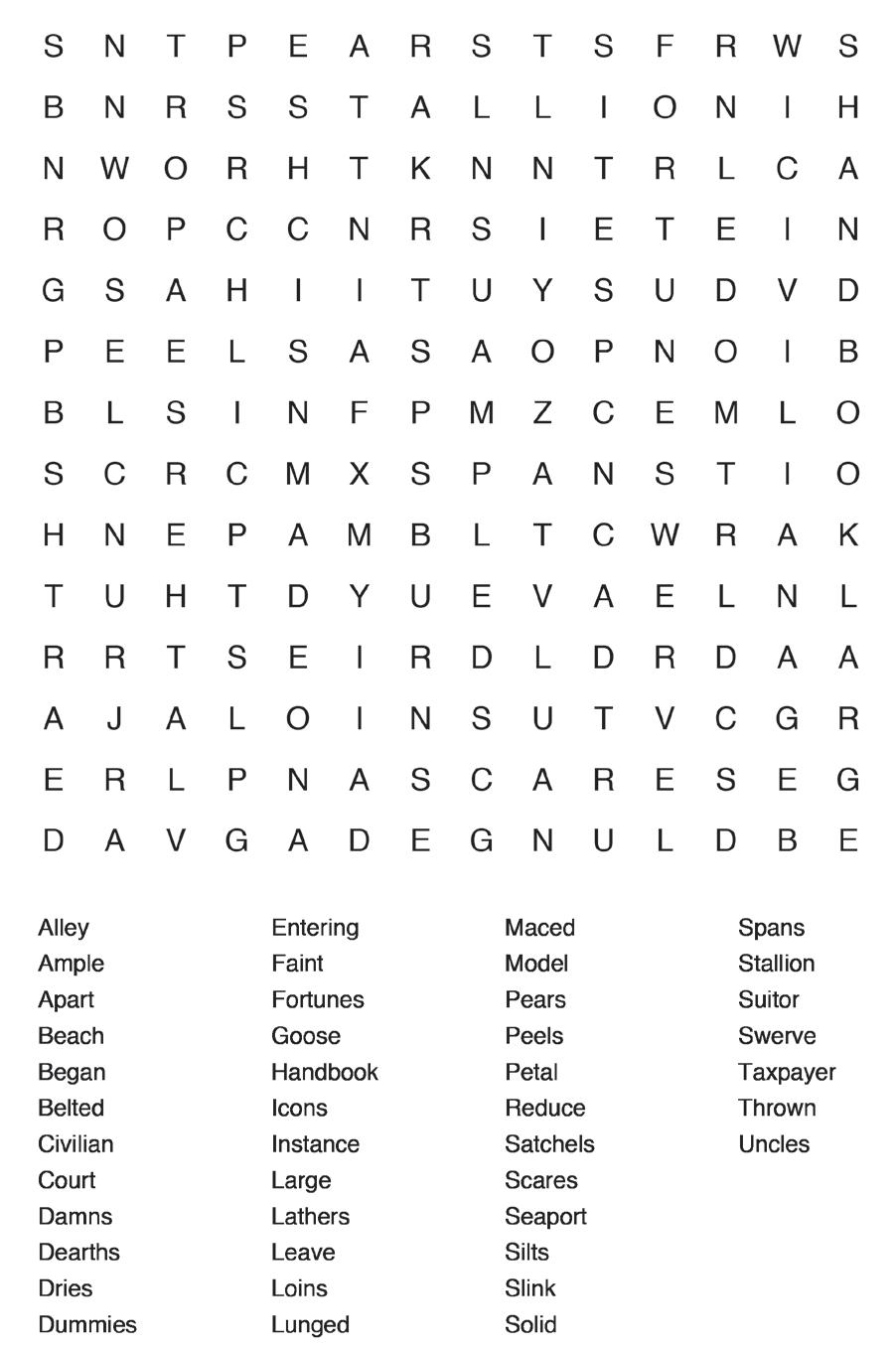
By MATTHEW FUTTERMAN / THE ATHLETIC
There are few things Americans love more than a single-elimination knockout tournament. March Madness. The NFL playoffs. The Indiana High School Athletic Association basketball tournaments. All are beloved institutions.
The U.S. Tennis Association loves them so much that it decided to have not one but two. American winners of the NCAA tennis singles competitions have long received wild-card entry into the U.S. Open. But the 2024 finals took place in November, at which point the 2025 U.S. Open felt far away. So Michael Zheng of Columbia, the men’s singles champion, last week found himself in another single-elimination playoff for a wild card he might have already won. He came up a match short, losing to Wake Forest’s Stefan Dostanic — who did not play in the 2024 NCAA event — 6-3, 6-4.
“I told him I know it sucks,” Dostanic said of their exchange at the handshake between two friendly rivals. “I got a lot of love for him. It sucks that only one of us can get the wild card. That’s sports.”
In the women’s competition, Valerie Glozman of Stanford beat Mary Stoiana, who recently graduated from Texas A&M. Darja Vidmanova of the Czech Republic, a student at the University of Georgia, won the same 2024 title that Zheng won, but she was not invited to the playoff. Non-Americans were not eligible, in keeping with what a USTA spokesperson called the “long-standing tradition of supporting American NCAA champions with a U.S. Open wild card.”
All this sounds pretty fair — better

to have players compete for a coveted spot in a Grand Slam main draw and the $100,000 that goes with it, rather than have a bunch of men and women in blazers dole out those spots. But the strategic cocktail of soft nationalism, corporate politics and ticket-sales boosterism that constitutes the wild-card system more often overshadows sporting fairness.
There are wild-card entries at nearly every ATP and WTA tournament. Smaller events might use them to attract stars who have lost early in a bigger tournament and need more matches. They get practice; the tournament, hopefully, gets to sell more tickets. Wild cards announced further in advance can attract sponsors. And companies that own tournaments and also represent players, such as IMG, will use them to give their up-and-coming stars the exposure that can lead to lucrative deals.
But it’s at Wimbledon, and the Australian, French and U.S. opens, where the arbitrariness that the wild-card system originally carried is most dimmed.
In the prehistoric days of tennis, roughly 60 years ago, tournament directors filled their draws with whichever players they wanted. They all tried to get the players who were winning and doing well at other tournaments, but after that, they would recruit and accept the players they knew or had heard good things about.
That all went out the window with the computerized rankings systems that sought to rid the sport of favoritism. The advent of rankings allowed players to earn their way into tournaments, but the owners and directors still held on to a handful of slots for their favorites, which became known as wild cards. As tennis has grown and the four Grand Slams — and their respective national tennis federations — have grown more powerful with it, that favoritism has evolved into something far less wild and far more predictable.
To followers of other sports, it feels strange. Should Manchester United get a spot in the Champions League because it is arguably the world’s most popular team and it used to win a lot of titles, even though it could not qualify on merit?

And yet, wild cards and home-country favoritism remain pro forma in tennis, even though at every tournament there are plenty of players, ranked far higher than the people awarded special entry, who are on the outside looking in.
At the Grand Slams, which have 128 entrants in the men’s and women’s singles fields, wild cards usually take up 6% of the entries. The tennis federations of the United States, France and Australia have a reciprocal agreement, with each country allowing the other two to fill one of the wild cards with a player of their choosing.
Like the United States, the other Grand Slam host countries mostly reserve their remaining wild cards for their own players. That works out great for American, French, Australian and British players. It’s not so good for anyone from one of the other 209 countries that make up the International Tennis Federation.
The Australians do provide a men’s and women’s singles berth for a player from the Asia-Pacific region, to foster development in less-traditional tennis countries. Kasidit Samrej of Thailand, whose top ranking is No. 382, and
Zhang Shuai of China, a veteran of the WTA Tour and a top doubles player, won playoffs for those spots in 2025. Samrej took Grand Slam winner Daniil Medvedev to five sets in a gallant firstround defeat; Zhang beat McCartney Kessler of the United States before losing in the second round.
Of the 15 All England Lawn Tennis Club singles wild cards for the 2025 edition of Wimbledon, just one — two-time champion Petra Kvitova of the Czech Republic, who is retiring at the end of this season — is not from the United Kingdom.
Most of the players are up-and-comers, such as Hannah Klugman, a French Open junior finalist; Mika Stojsavljevic, last year’s U.S. Open girls’ singles champion; and Henry Searle, last year’s Wimbledon boys’ champion. Others — Harriet Dart, Jodi Burrage, Jay Clarke — will fall under what the club calls “increasing British interest.” Dart has won one of her past 10 matches, unlike, for example, Iva Jovic, the American who just won the Ilkley Open, a WTA 125 grass-court warmup for Wimbledon, one rung below the main tour.





Answers to the Sudoku and Crossword on page 21



